Santa Cruz Trek, Peru
Santa Cruz, the most popular trek in northern Peru delivers an amazing experience
While Machu Picchu treks steal all the limelight when it comes to trekking in Peru, here nestled away in the Cordillera Blanca exists one of the most beautiful treks in Peru. One of the best things about it? There are no crowds here, asides from my group I passed less than a dozen other people heading in the opposite direction.
Santa Cruz in a nutshell
Altitude: 3000m to 4750m
Distance: 50km (3-4 days trekking)
Route Type: point to point
Mountain passes: 1
Distance to Vaqueria trailhead from Huaraz: 3.5hrs
Well worn trail: Yes, most of the time
Signposted: Campsites and trailheads (from Ranger station)
Other: Short scramble required for the best views at Punta Union Pass
Santa Cruz trek prelude
If you’ve read my other Huaraz related post, you’ll know that my Santa Cruz adventure didn’t start at the trailhead – it started with me trying to book the damn thing. Maybe it would have been easier if I wasn’t travelling solo and at the end of the season. Maybe I was just doing it wrong, but boy was it a mission.
Long story short, I got burned by a (reputable) company that said they would be departing on a specific day but in the end, they didn’t. Those days I waited? Wasted. Miraculously, I bumped into 4 Dutch people who just checked into my hostel dorm room that had just sussed out their Santa Cruz situation and came back to get cash to pay. They kindly extended an invitation to me:
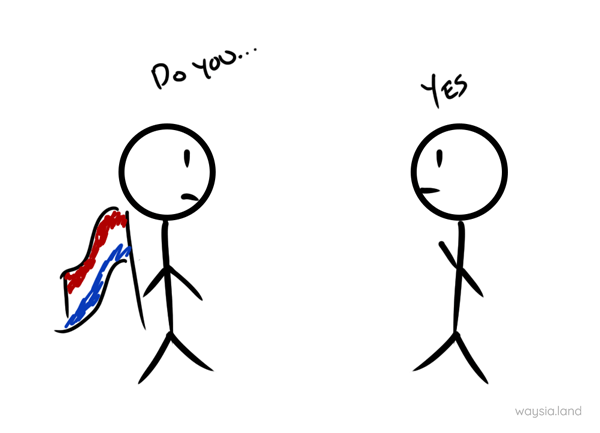
Huzzah!
First views of the day – Santa Cruz trek – day 1
The scenic views start well before you get to the trailhead. Serene farmlands nestled at the base of towering mountains is the dominant landscape presented before you. As it’s largely on the same route, if you’ve previously done the Laguna 69 hike then these scenes may seem familiar to you.
You can’t help but wonder, do the people living here know they spend every day amongst amazing natural scenery or is it all just the “same old view” to them? Do awe-inspiring views ever lose their magic? Perhaps. But fortunately for you as a traveller, you won’t be there long enough to find out.
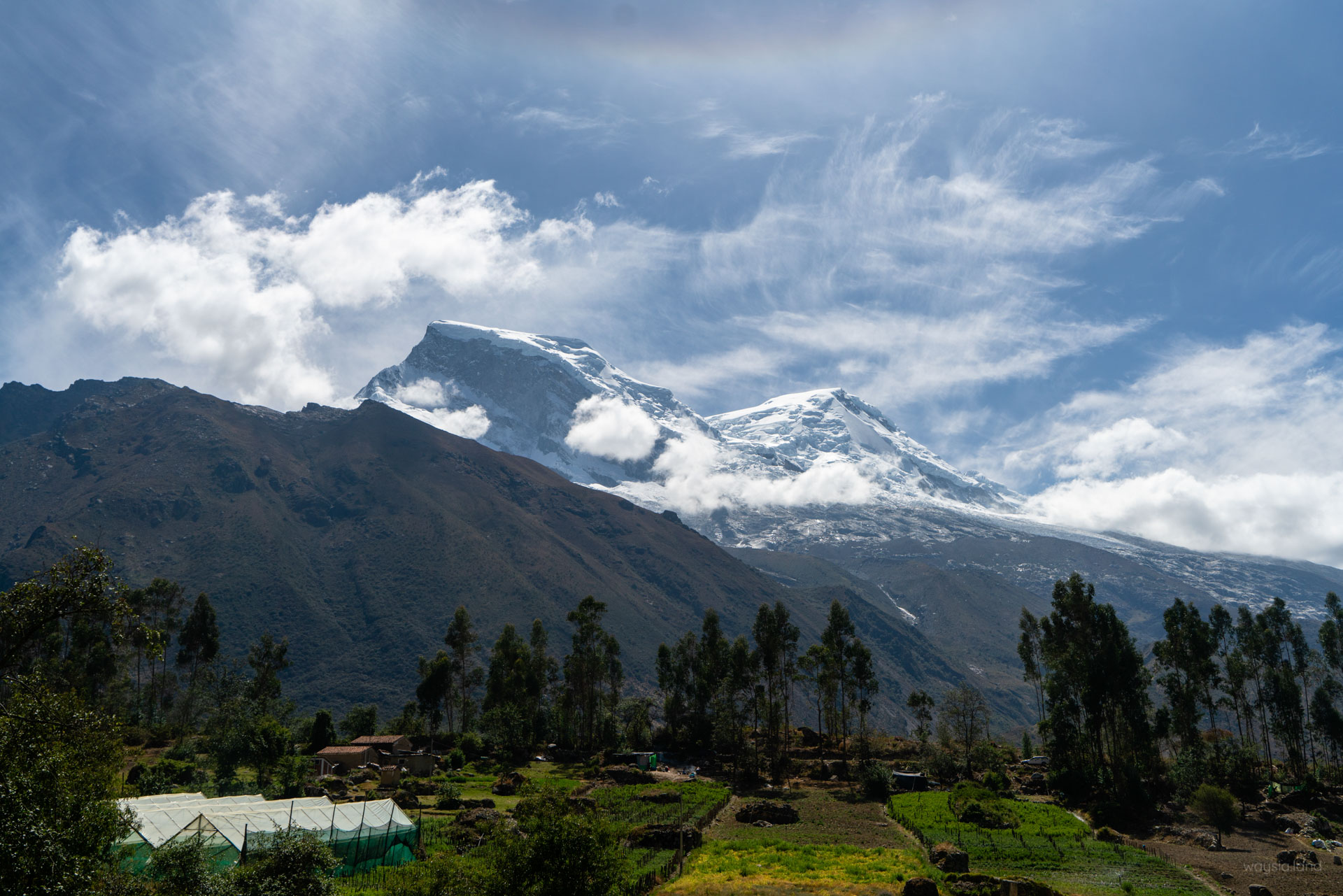
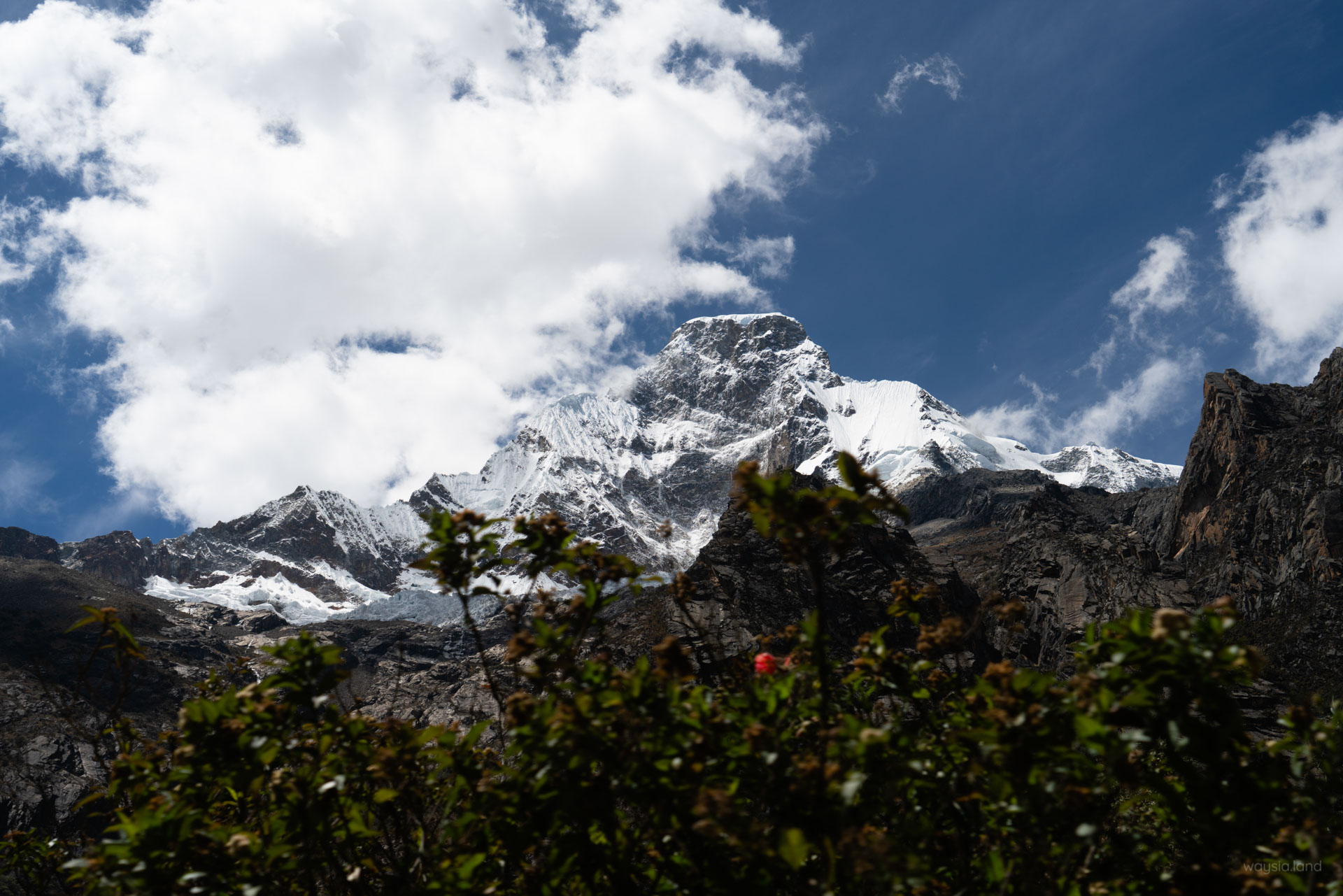
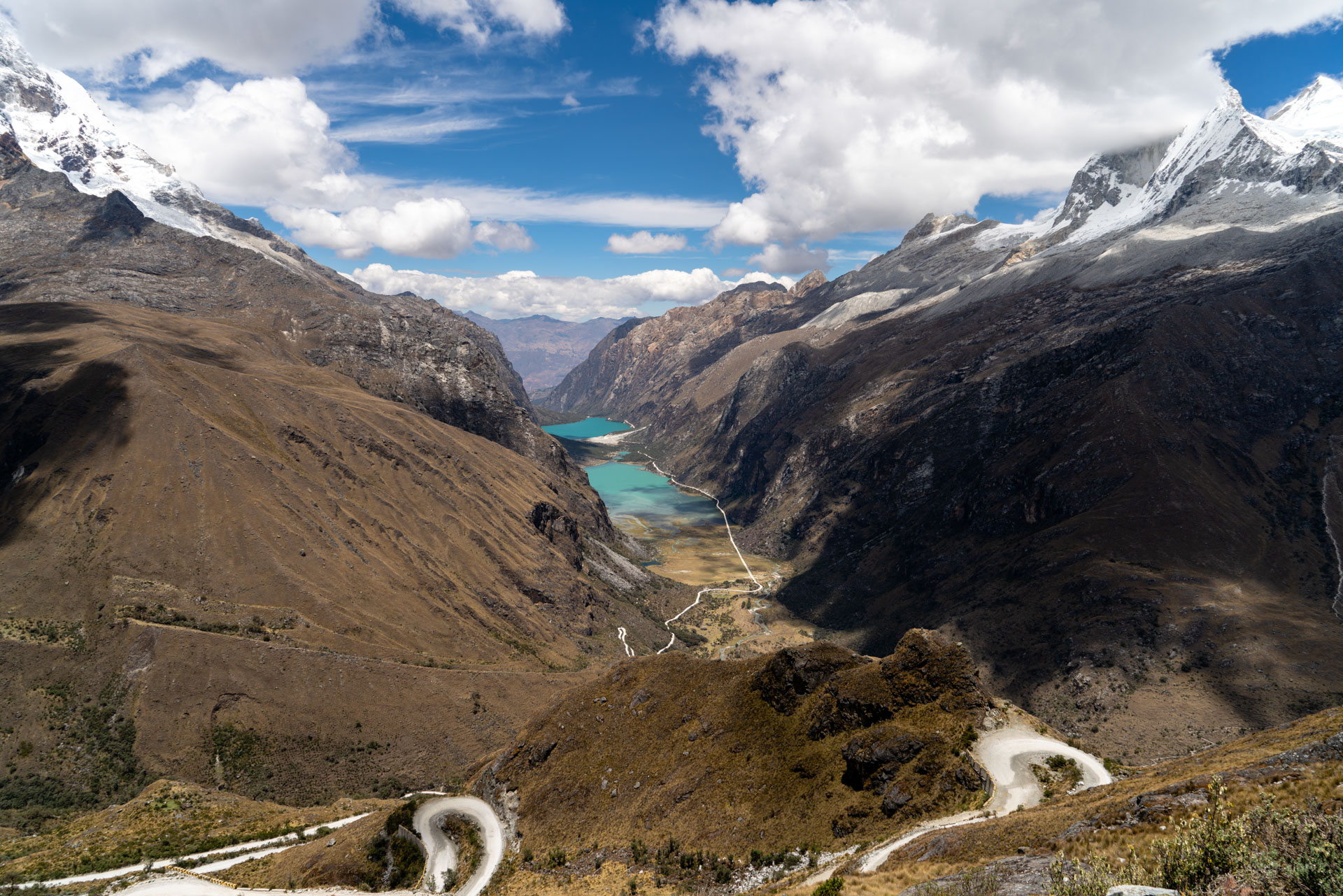
As with the Laguna 69 hike, you will stop at Laguna Llangunaco (pictured above) to take some photos. Remember, you will be shuffled back on your transport in less than 5 minutes so be quick. However, with the Santa Cruz trek, upon reaching the top of the switchback roads, you get to step out to this beauty of a lookout that looks back at the route you just travelled.
From there you’re taken further into the mountains to the tiny village of Vaqueria which serves as the Santa Cruz trailhead.
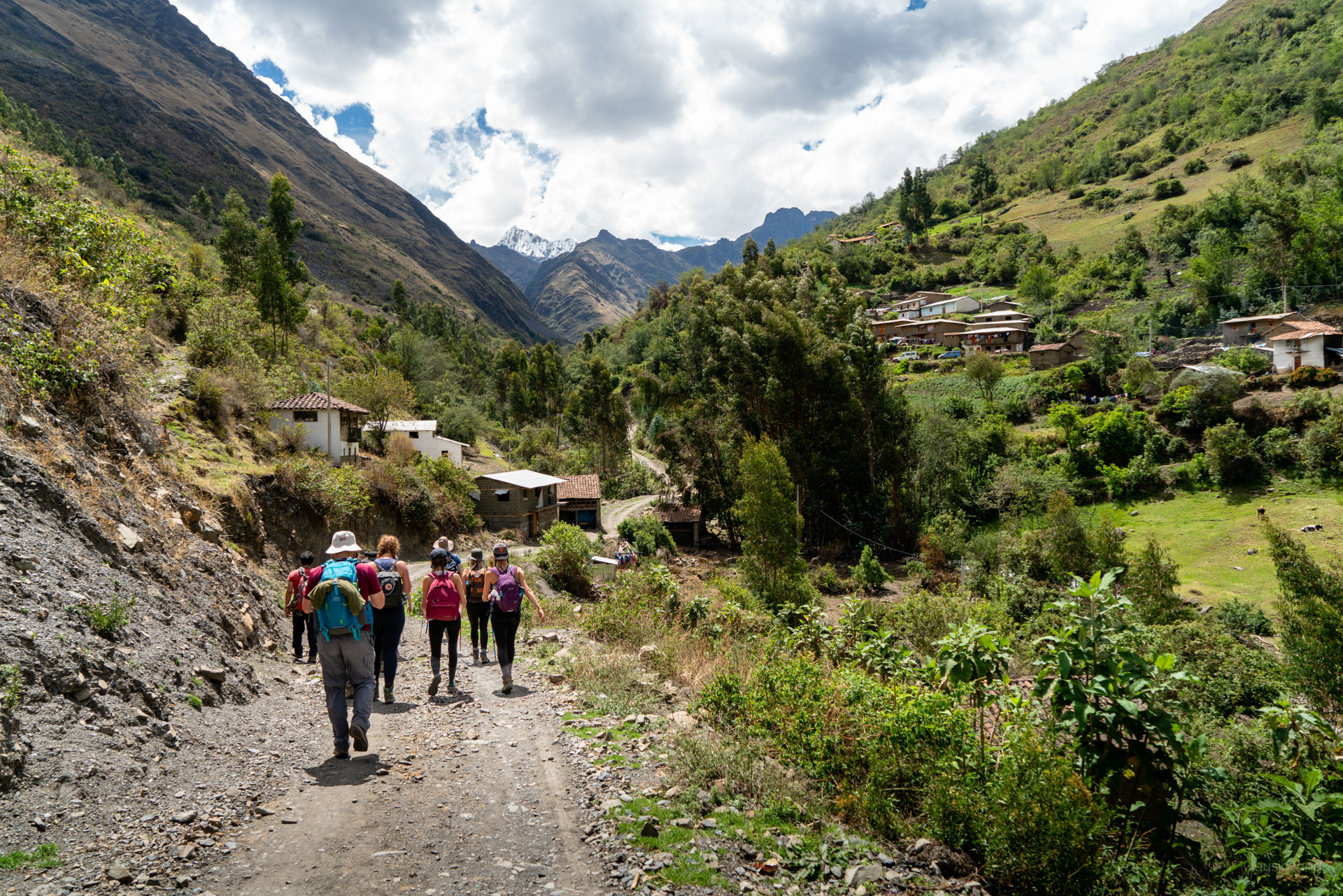
Vaqueria trailhead
The trek starts in the tiny village of Vaqueria (3700m) where you are dropped off by the bus. There is a store here so if you want some last-minute snacks or even a Coke you can buy them here. If they give you a warm one ask for “frio” which means cold in Spanish. It was here they handed us our very uninspiring packed lunches. I can’t remember what was included exactly since I blocked it from my memory, but I do remember that it was a very dry roll with not a lot of filling.
This is a point to point trek with the end being the alternative trailhead, Cashapampa (2900m). If going the guided route, you likely won’t have an option of trailhead unless you go with a different operator or do a private tour.
If acclimatisation is a worry you should start at Vaqueria. My Santa Cruz guide goes into why in more detail but essentially starting at Vaqueria uses acclimatisation best practices such as the concept of ‘trek high sleep low’.
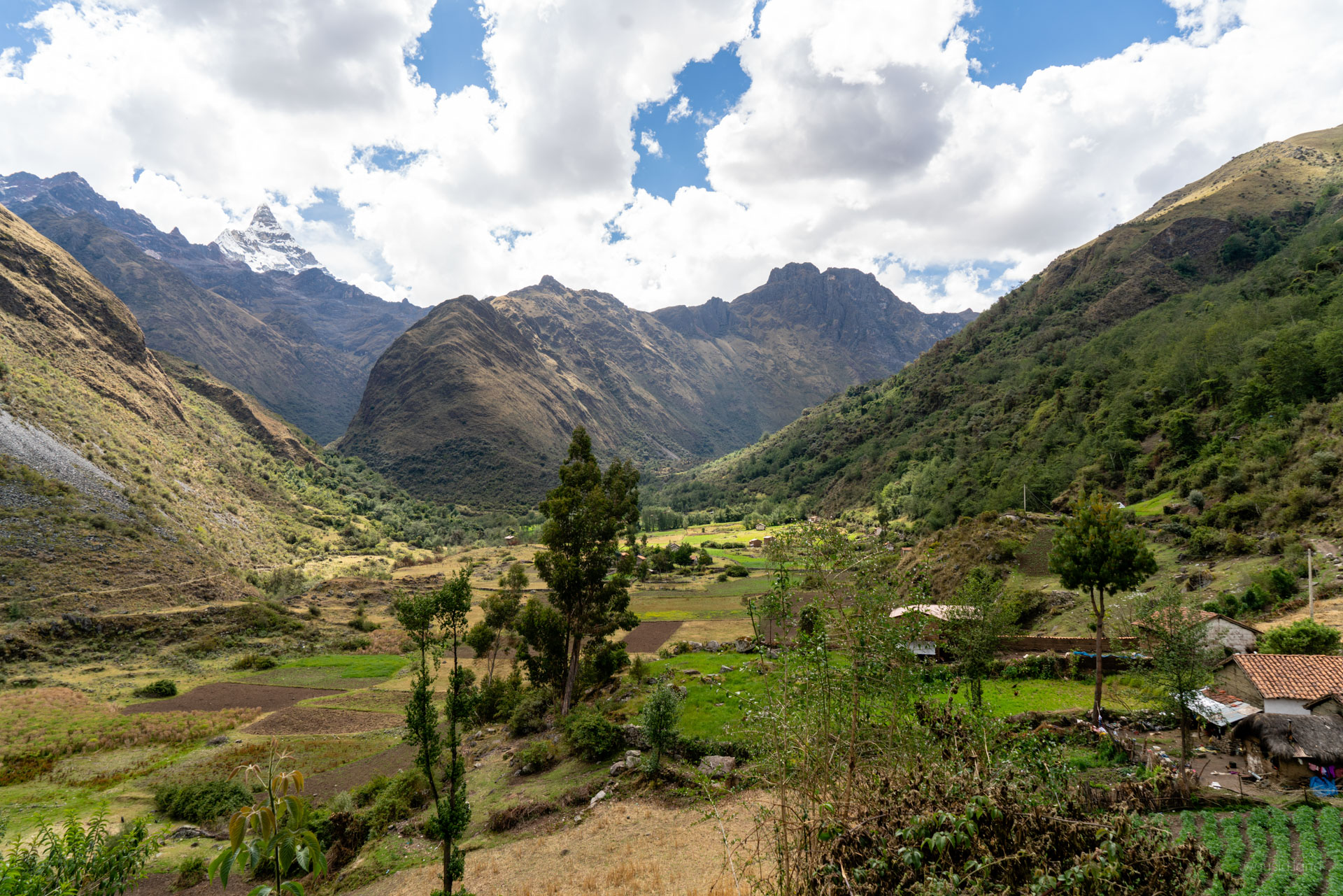
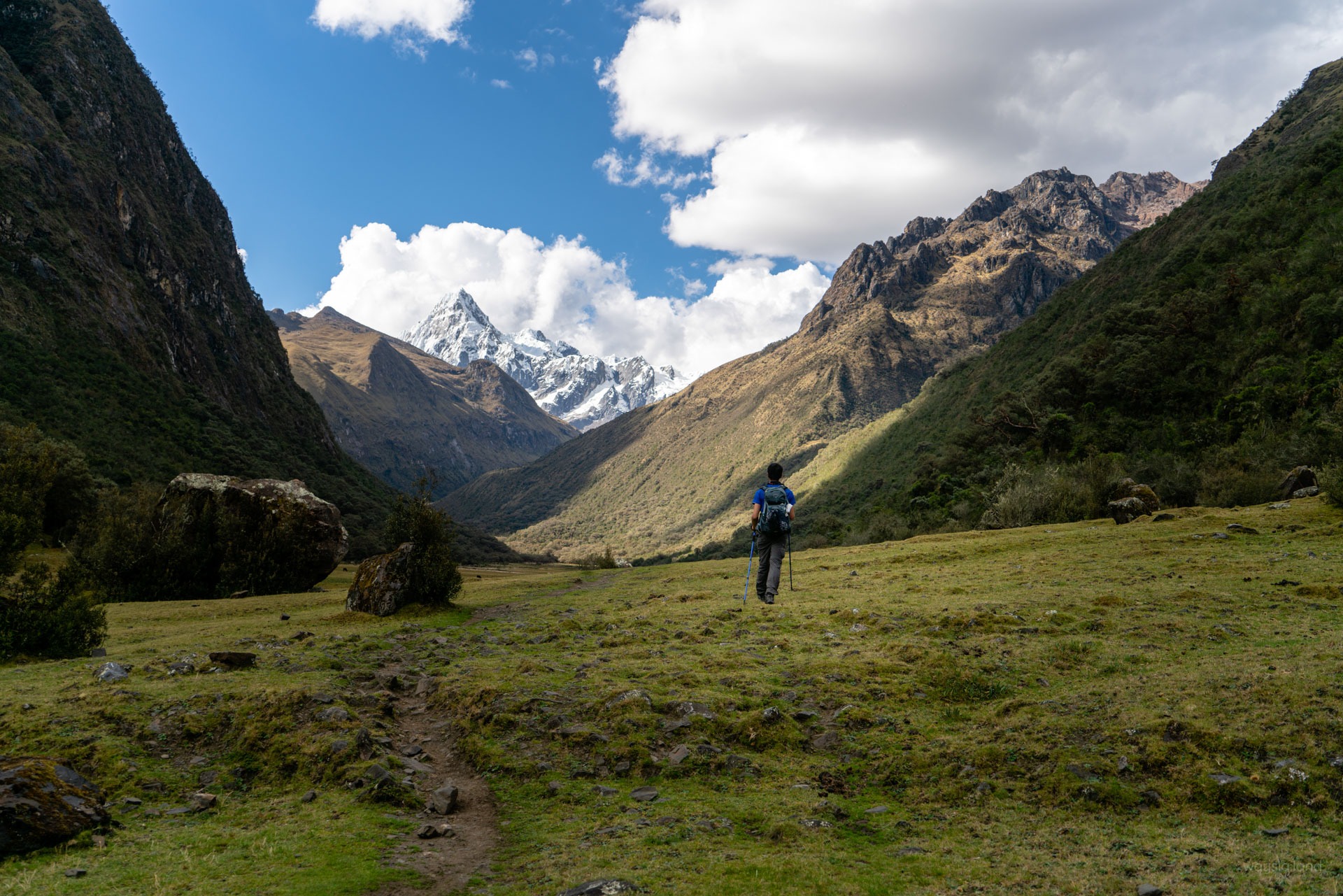
Being a guided trek, I had about 10kgs (water included) on my back inside a 36L backpack, although some people had much smaller backpacks(12L to 20L). You usually get around 5-7kgs for the donkeys but are told not to put fragile things with them since they can break. As for what the 10kgs is comprised of: 1.3kg bag, 2-3kg water, 1kg electronics, shell jacket, mid layer, snacks, hiking toiletries, flip flops, a med kit and some other smaller things like alcohol gel, pack rain cover, etc
Despite the pack donkeys, my new friend Kris took all her equipment, tent and cooking equipment included as practice for Huayhuash. As much as I looked like I was struggling, she looked far worse! That made me feel a bit better about being slow.
The trail from Vaqueria immediately descended down and what must go down, well, must go up. So not long after we reach the bottom, we were put to the test with a slow and steady incline as we walked by people’s homes on the way to the ranger station.
Upon reaching the ranger station we did away with all the park formalities and had a short break. Up and up we went… struggling breath after struggling breath. The land eventually flattened out revealing the first campsite (Paria) in a “damn that’s amazing” kind of way. Sort of like how in the movies someone climbs a sand dune on their hands and knees and then when they reach the top, salvation is revealed.
With our spirits renergised, we hastily made our way down to the campsite where our porters had already started setting up. Turns out our group was the only group staying at this campsite. We had the valley to ourselves!
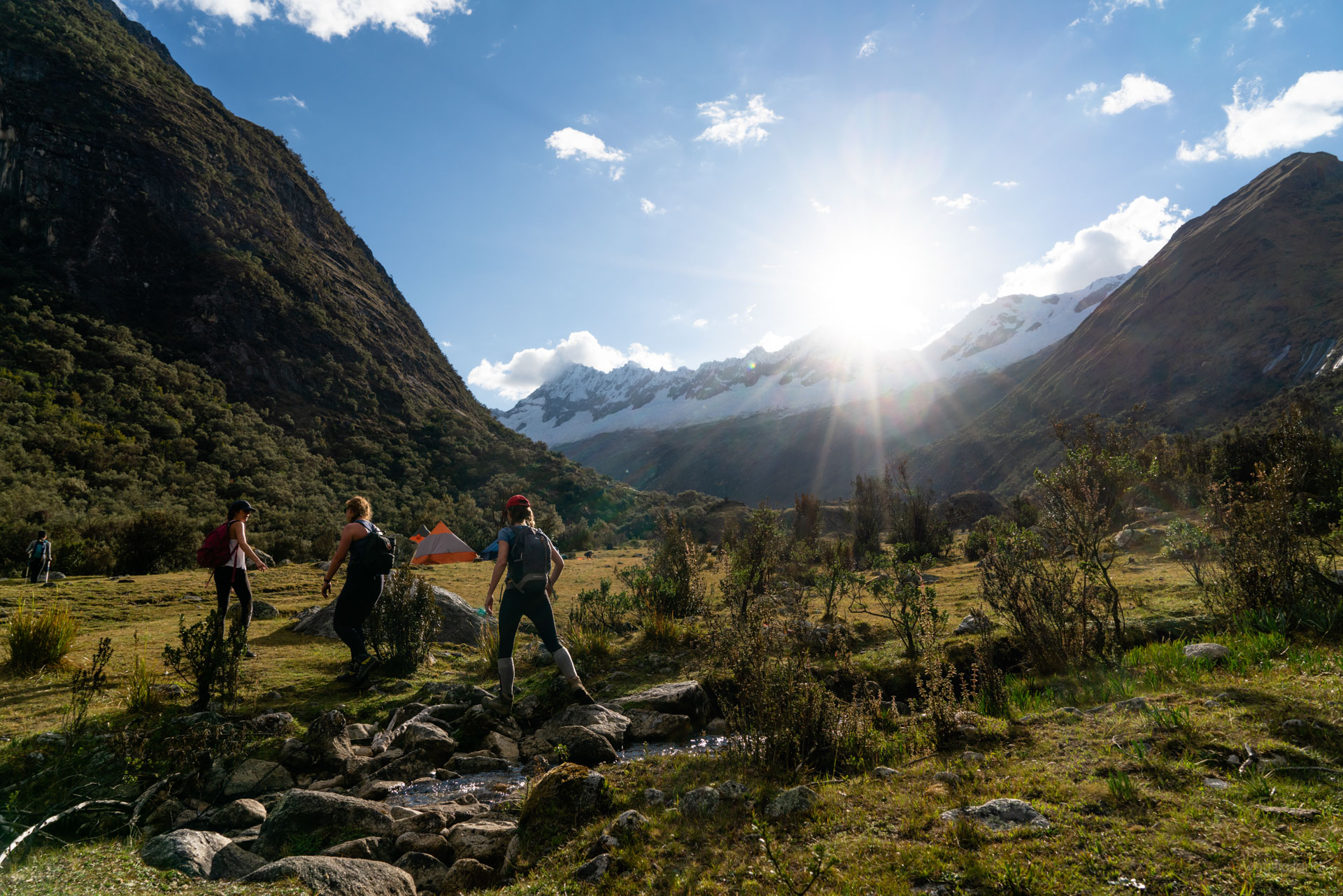
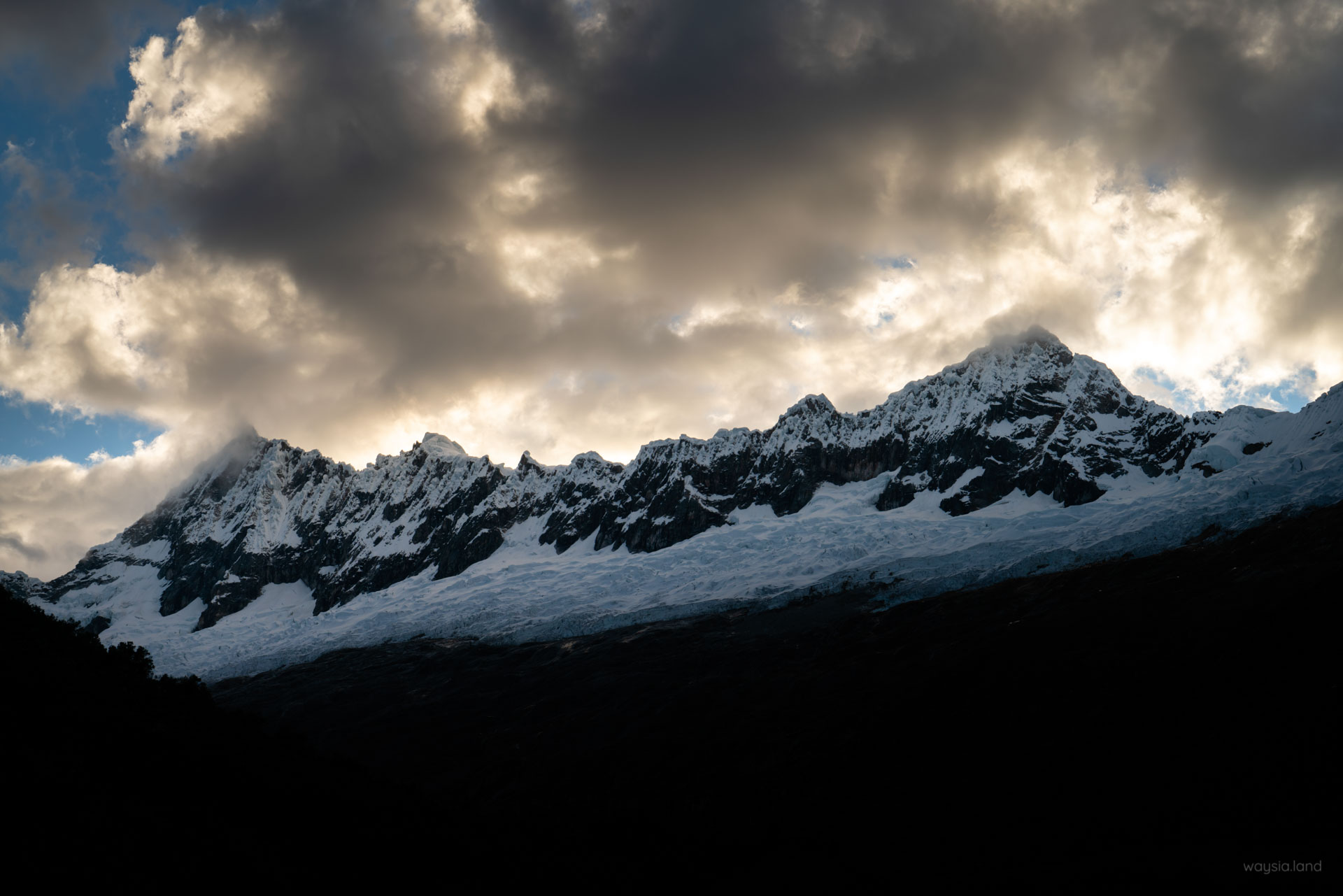
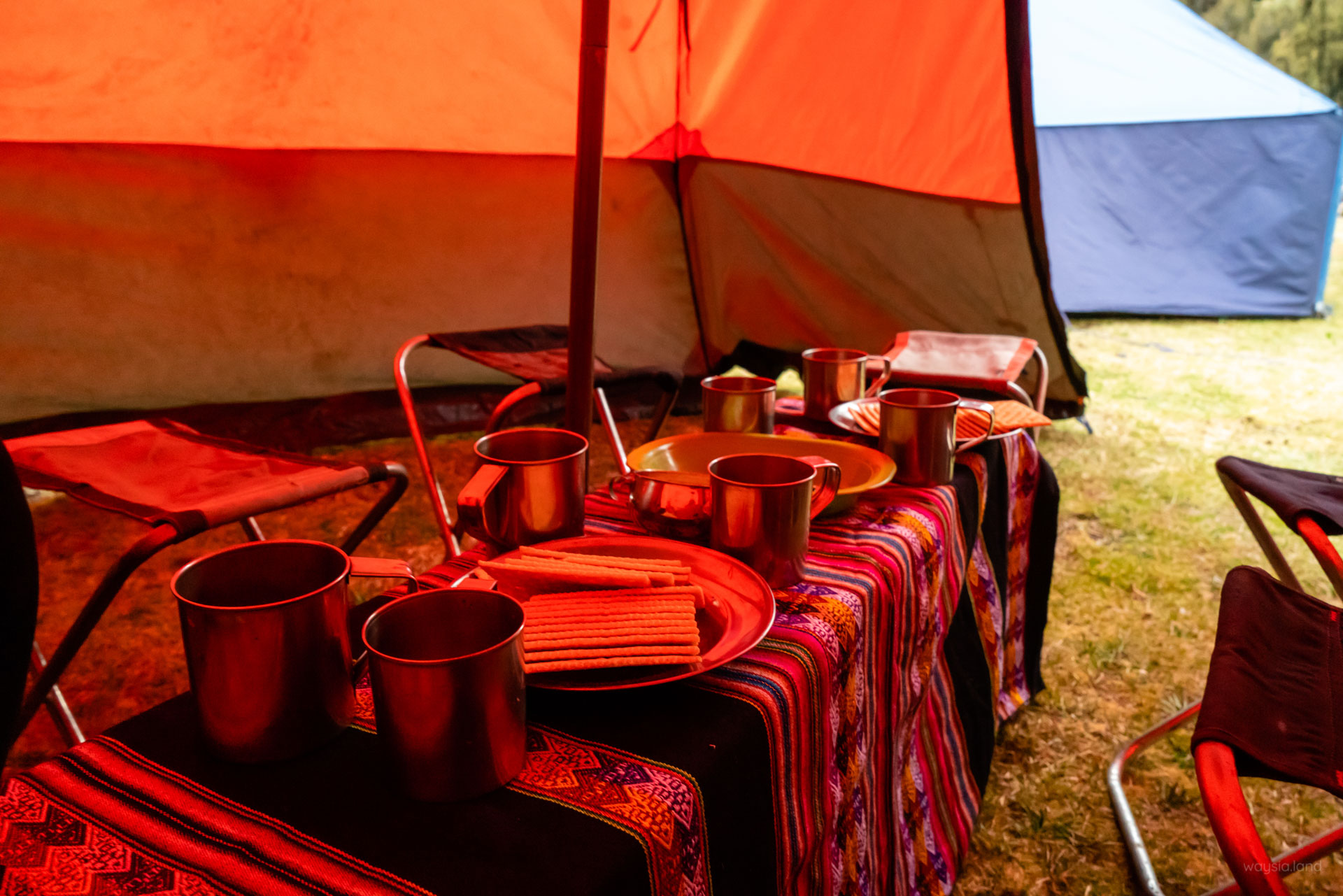
While we relaxed at the campsite, the staff set up several tents. The communal tent, the cooking tent and the tents your group sleeps in. The cooking tent doubles as the where the cooking happens and where some of the staff sleep. The communal tent is basically where all meals are served and is a neat weather shielded place to socialise after you’re done trekking for the day.
A few people wandered the general area but other than that, trekking was done for the day. After they set up the tents, it was tea time which I had been introduced to and become very familiar with on my Machu Picchu trek. Tea time would consist of a variety of comforting hot teas, instant coffee plus snacks. Extremely welcome after the day’s hike.
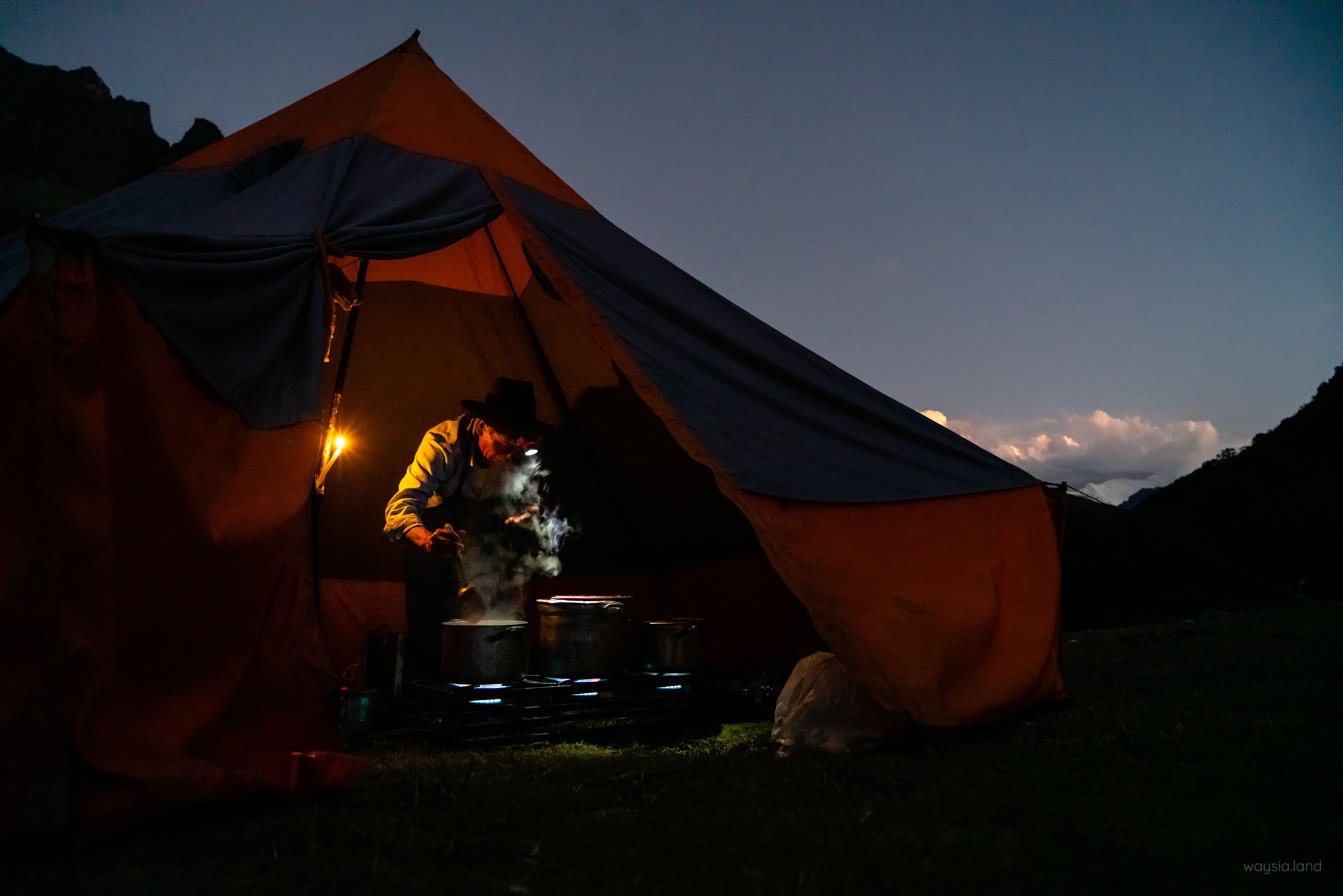
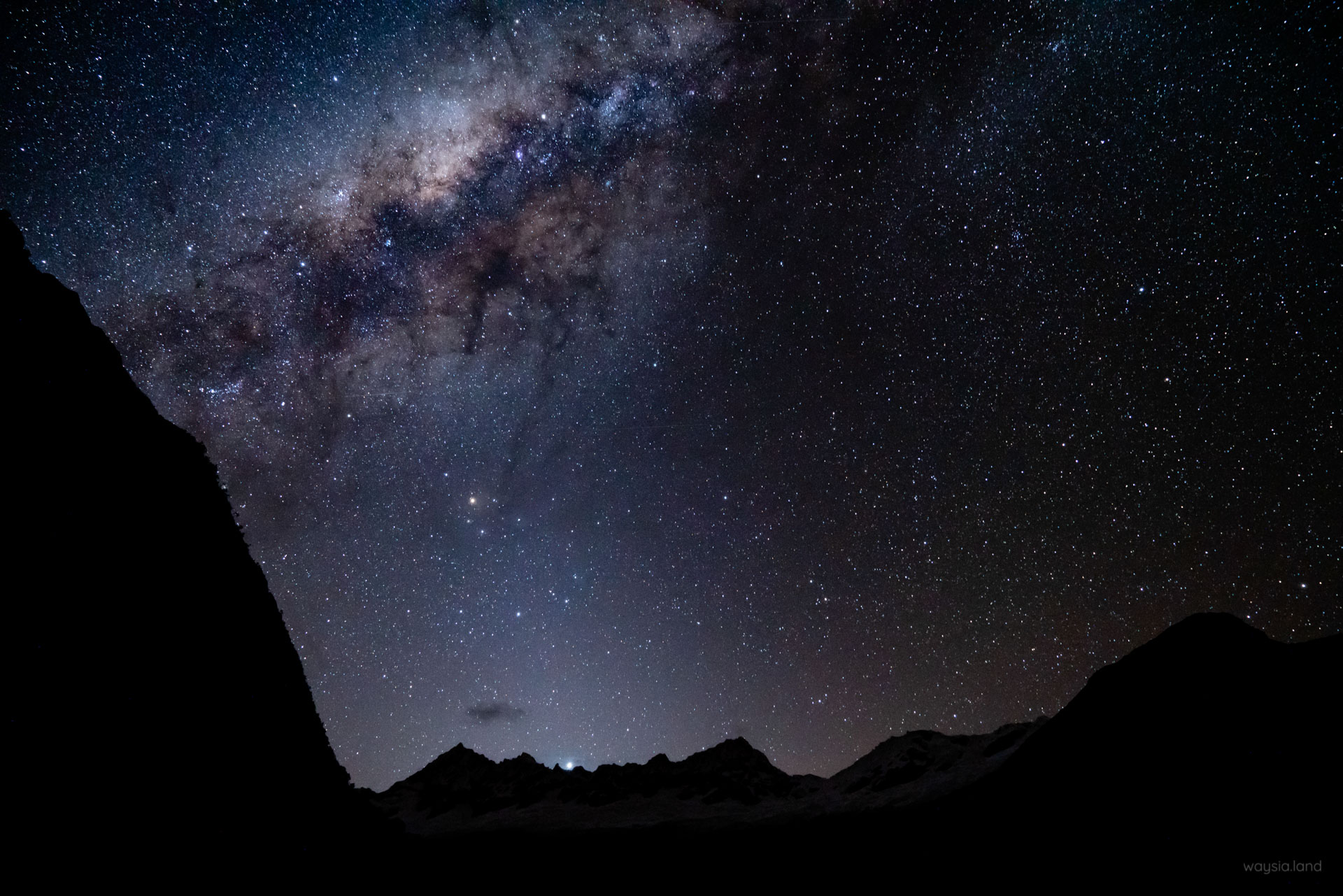
Santa Cruz night sky
I usually make an attempt to photograph the night sky on a trek in the middle of nowhere. The light pollution is almost non-existent and combined with the high altitude, gives the perfect formula for viewing the Milky Way galaxy. Of course, we live in the Milky Way and what people are referring to is the ‘scar’ as pictured above – which is actually looking towards the centre of the galaxy. What you see in the above photo is better than what the eyes can see but it will be quite impressive with the naked eye nonetheless, especially to those that live in the city. If you do spot an opportunity like this, don’t delay as clouds can roll in and ruin everything as what happened for us after dinner.
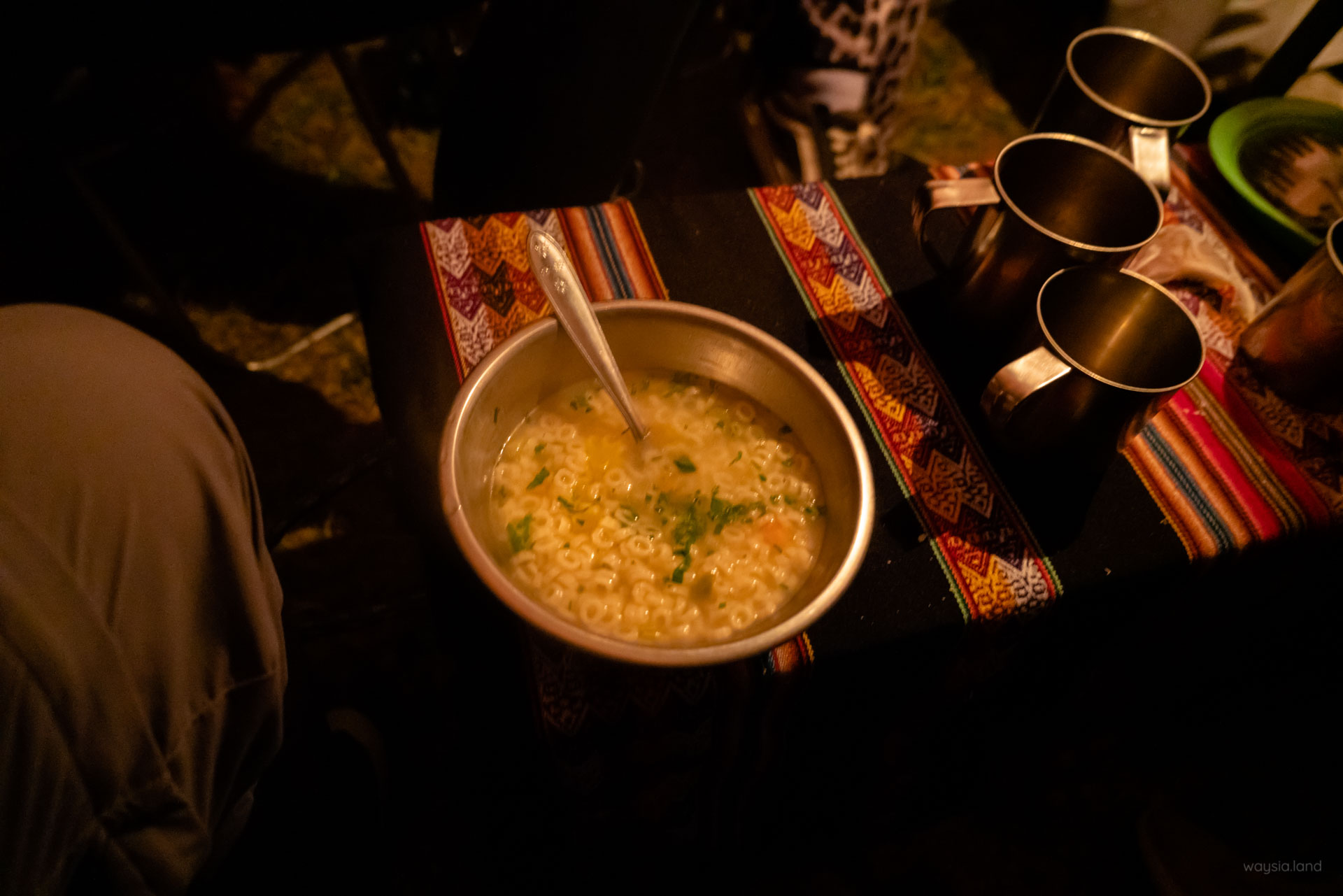
Food on Santa Cruz
After trying to photograph the night sky for several minutes it was dinner time. It’s always interesting to know what would be served since you usually have no idea prior to actually eating. This trek was done sometime after the Salkantay trek and the Colca Canyon trek so I was using that as a benchmark, with the former being as good as it can get on a trek.
Bowls were handed out to us which contained some kind of pasta soup. It looks simple but it was actually really nice. The soup is likely a Peruvian staple with the pasta ingredient substitutable for things like quinoa.
As for the main course…
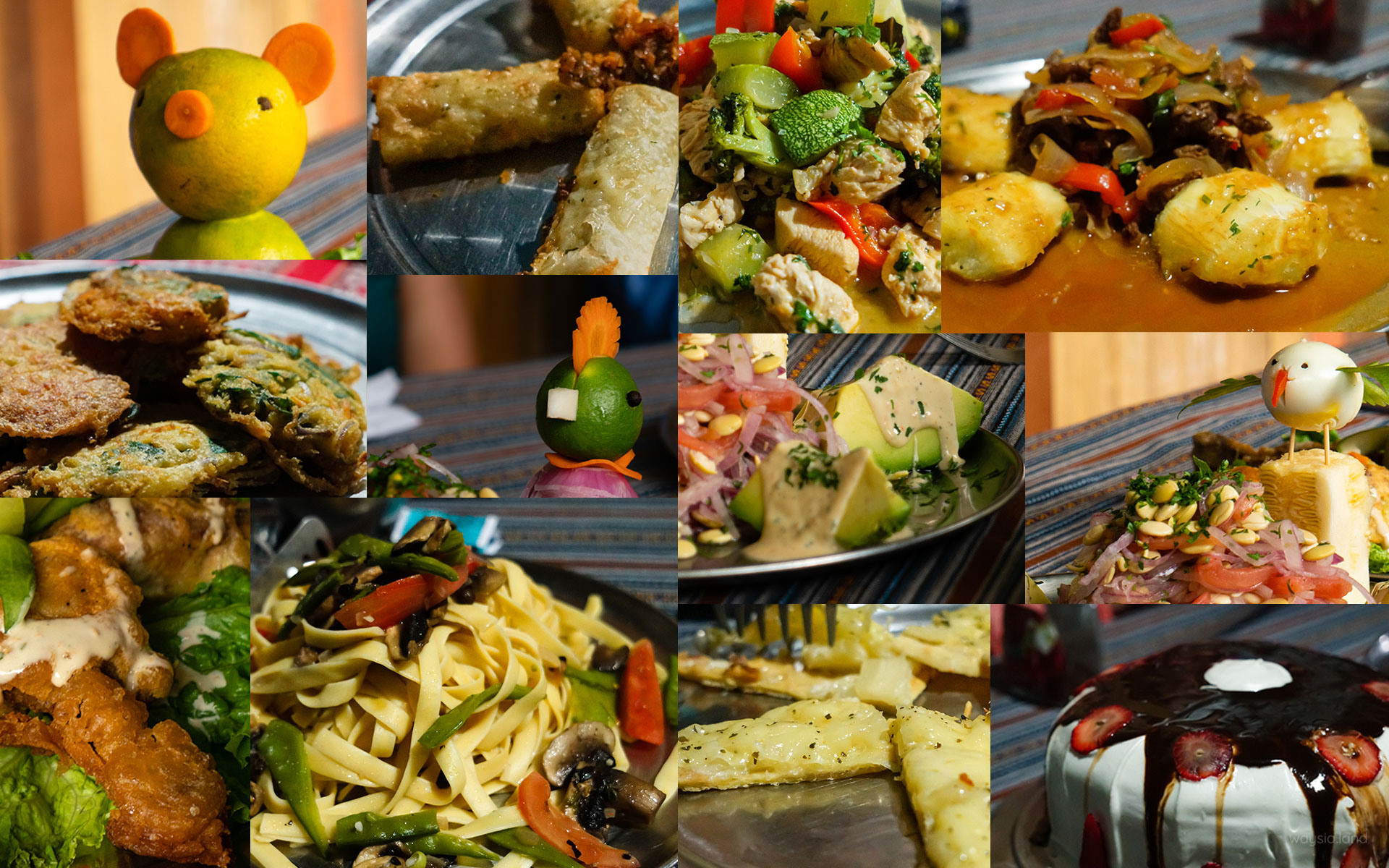
Yeah that wasn’t it.
Those are actually photos of the food on my Salkantay trek that you can use to compare with the actual dinner provided below.
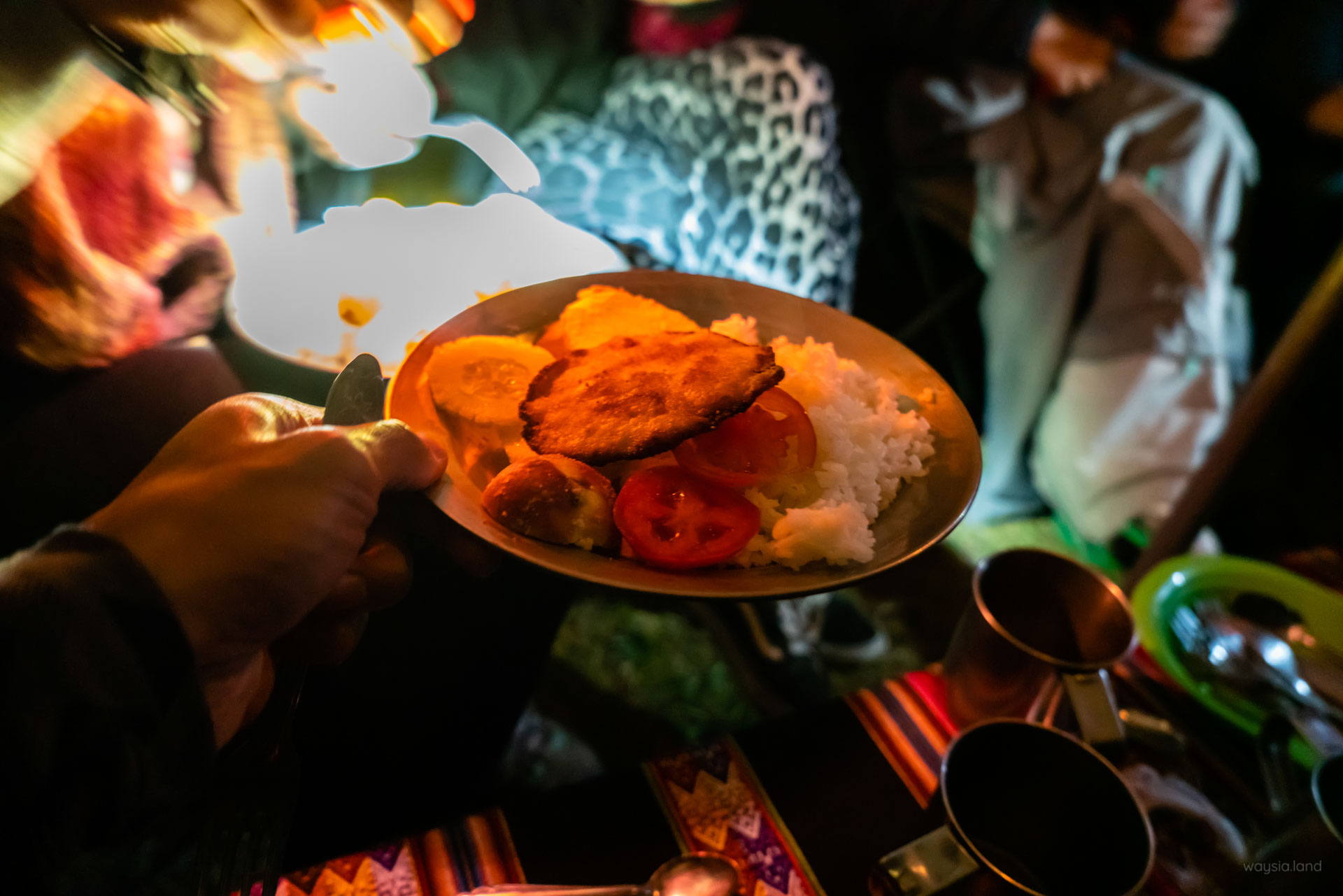
Compared to our entree which got our hopes up, the main course was something else and not in a good way. As you can immediately see the portion size is tiny – no bigger than my hand expanded. The thing on the top is like a schnitzel – only in this case, instead of a standard fillet you would find back home, the chicken was the flattest piece of chicken you’ve ever seen (the angle makes it look thicker). It was like the lid of a tin can covered in crumbs. At least we got 2 of them right? The next night we got something similar in size and the last night we got a small portion of spaghetti without any noticeable protein.
When you take all the meals together, i.e. breakfast, lunch, snacks, and dinner, you are still left feeling hungry. Keep in mind you’re walking about 15km per day – not exactly a typical day at home just sitting around. It was also comforting to know that it wasn’t just me, everyone in the group including the tiniest girls weren’t satisfied.
Fortunately for me, I packed a lot of trail mix and a couple of protein bars I brought from home which helped, but for those that didn’t bring anything? Bad luck.
If you’ve read my Salkantay Trek experience you’ll notice that these two experiences are wildly different. Keep in mind my Santa Cruz trek was about as cheap as you can get and Salkantay was on the other end of the spectrum.
Sleeping arrangements
As with any other camping treks, each tent is typically done in a twin-share nature. If you’re with a friend or partner then you’ll get to share together of course.
The first night is the coldest and nights can get down to below 0°C (32°F). Sleeping with all your hiking gear on is not uncommon. Some people came unprepared in the warmth department simply due to a lack of briefing/equipment by the trek companies. Obvious health issues aside, if it’s too cold you are simply unable to sleep at all.
While there was nothing wrong with the tents from a quality point of view, the tents were on the smaller side and looked like they were 3-season tents. In fact, there were actually 2 different brands of tents, 1 even smaller than the other. Note for the Huayhuash trek, we were provided with 2 sleeping bags each, one to put inside the other. This contrasts with the 1 we got for Santa Cruz, although Santa Cruz is a warmer trek.
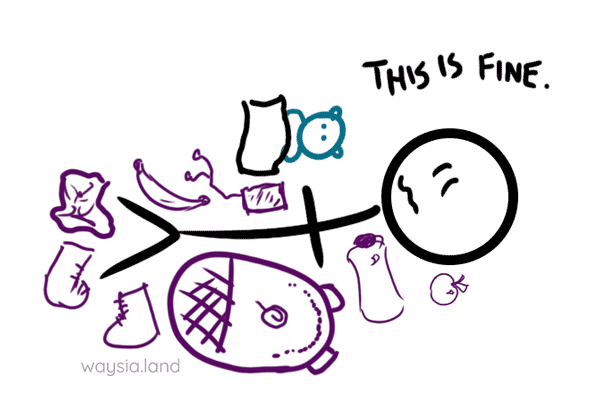
I stayed in both sizes and the smaller one was a 2-man tent for 2 persons which barely had space for gear. Everything technically fit inside but it was far from comfortable – think of lying in bed and filling all the empty space on the bed with stuff. In contrast, on my Salkantay they provided a 4-man tent and Huayhuash was a 3-man tent for 2 persons.
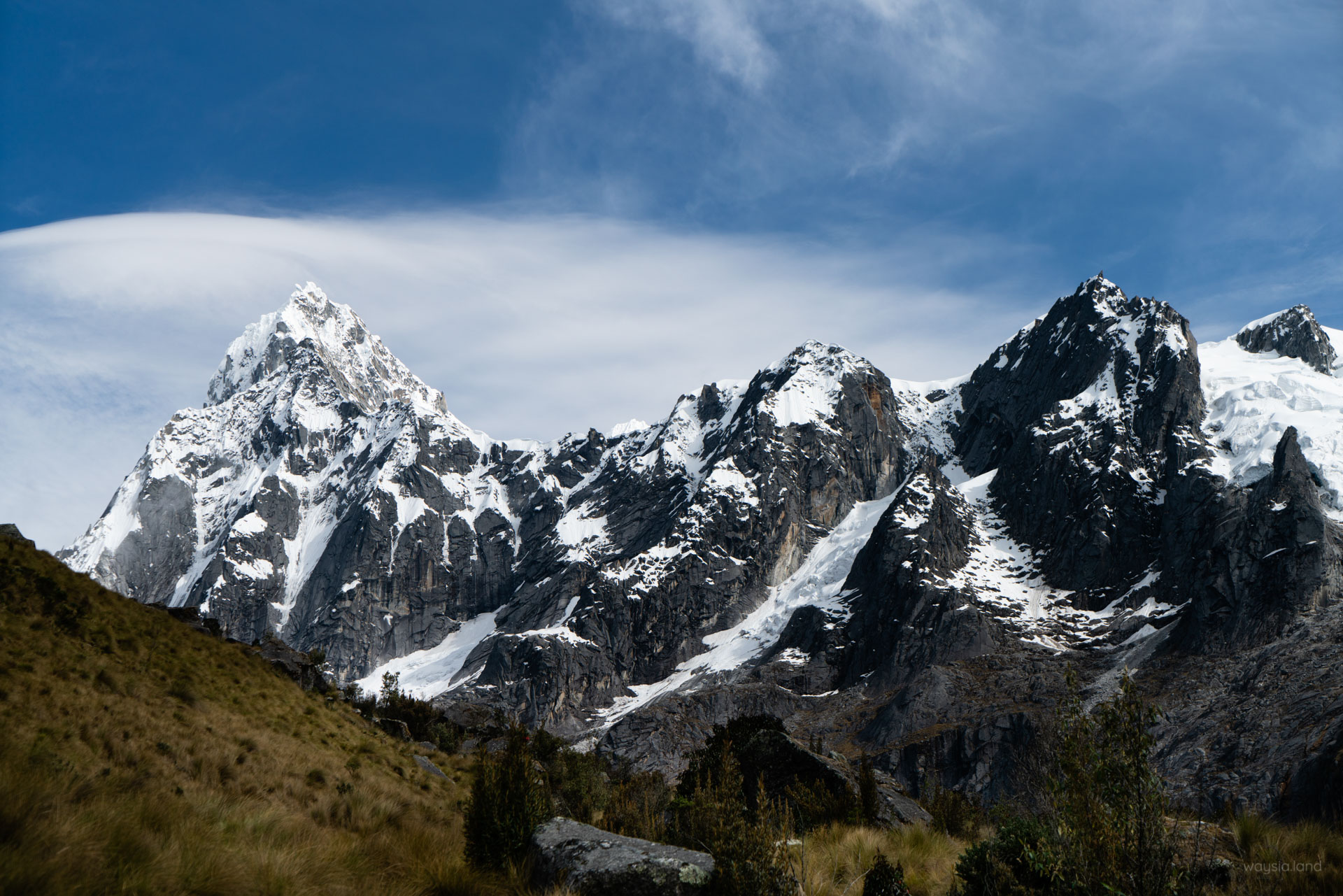
Santa Cruz trek – the slog to Punta Union pass – day 2
As always, the day started early with us leaving camp at around 06:30 to 07:00. On treks, I’ve found they typically wake everyone up about 30 minutes prior but if you have an alarm (phone, watch, etc) you can wake up earlier to do any morning rituals you need to do, without being rushed.
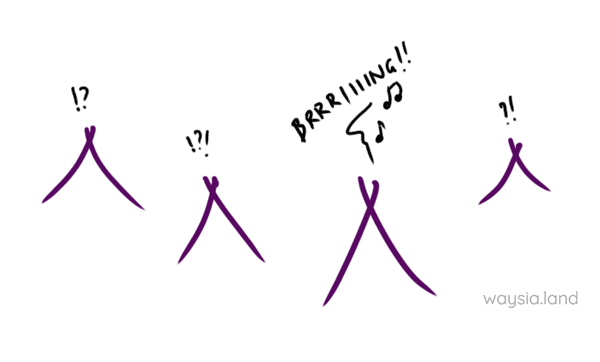
If you’re trekking in the same direction, this will be the hardest day of the trek and one of the most rewarding – hiking up to the Punta Union mountain pass.
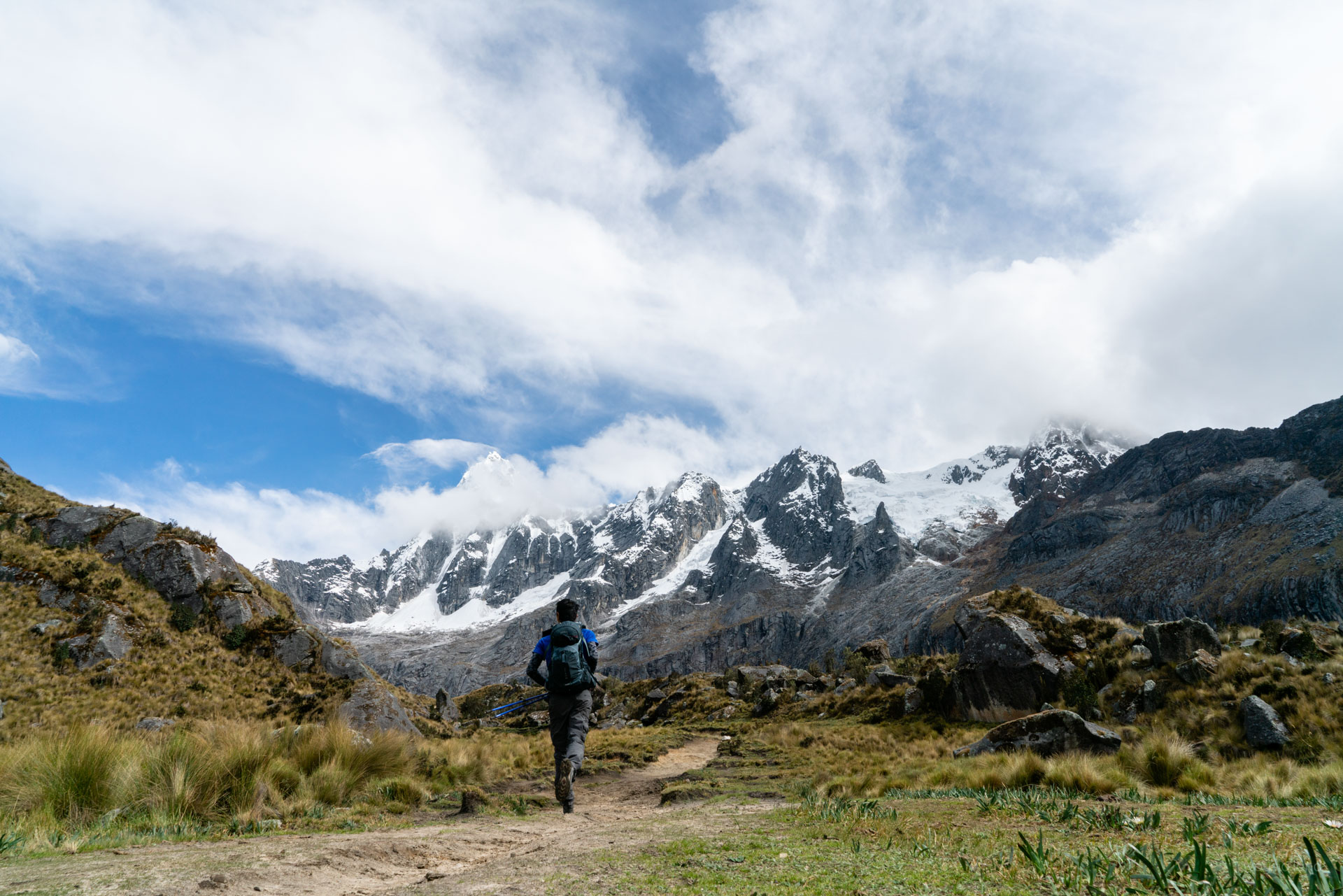
Acclimatisation
High Altitude – Acclimatise!
Like everything around Huaraz, this is a high altitude trek and altitude sickness is no joke. Instead of writing an intro about acclimatisation every time I want to write about an activity that’s high altitude and boring you like a plane safety video, I’ve created a separate post here which details the practical information you need to know.
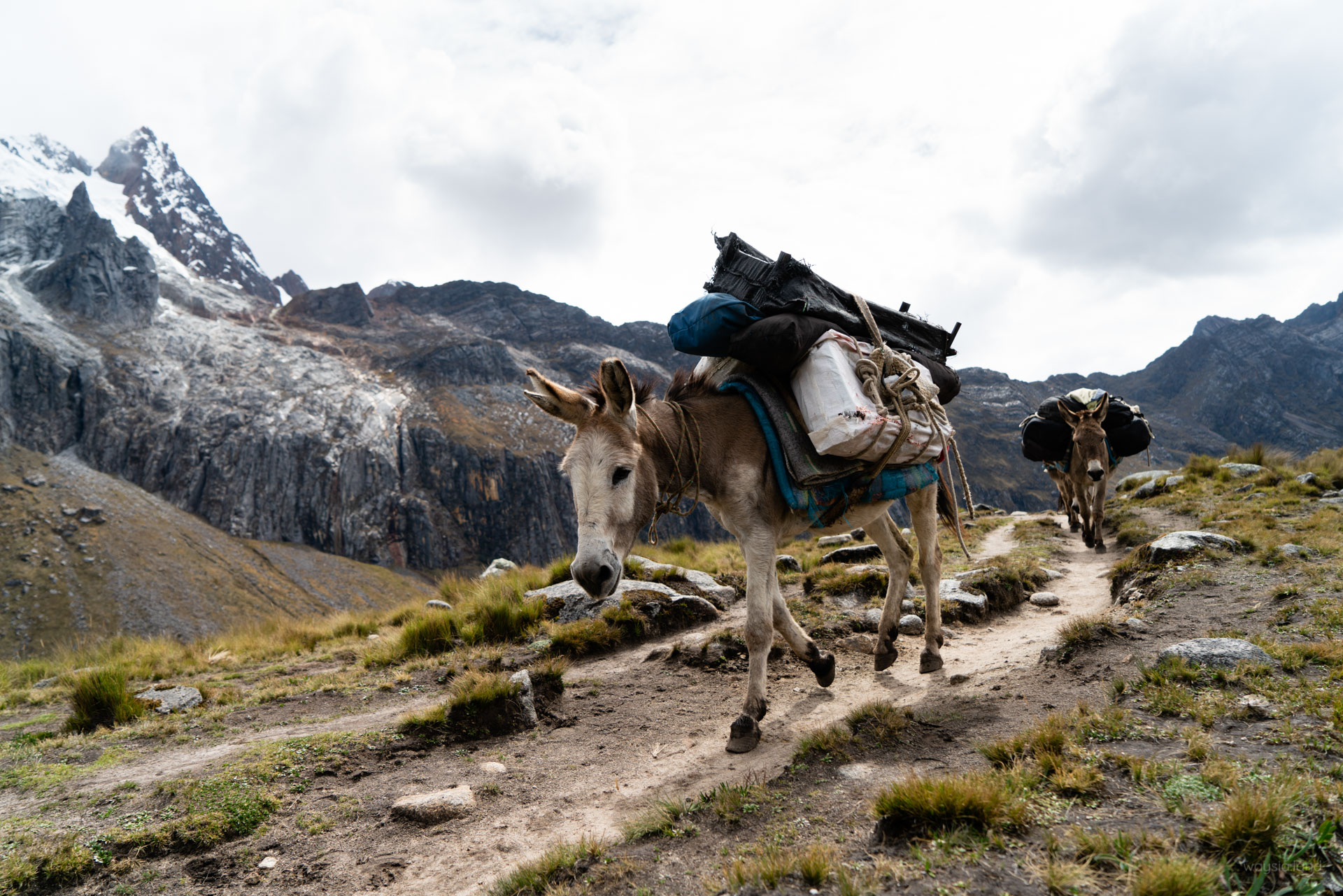
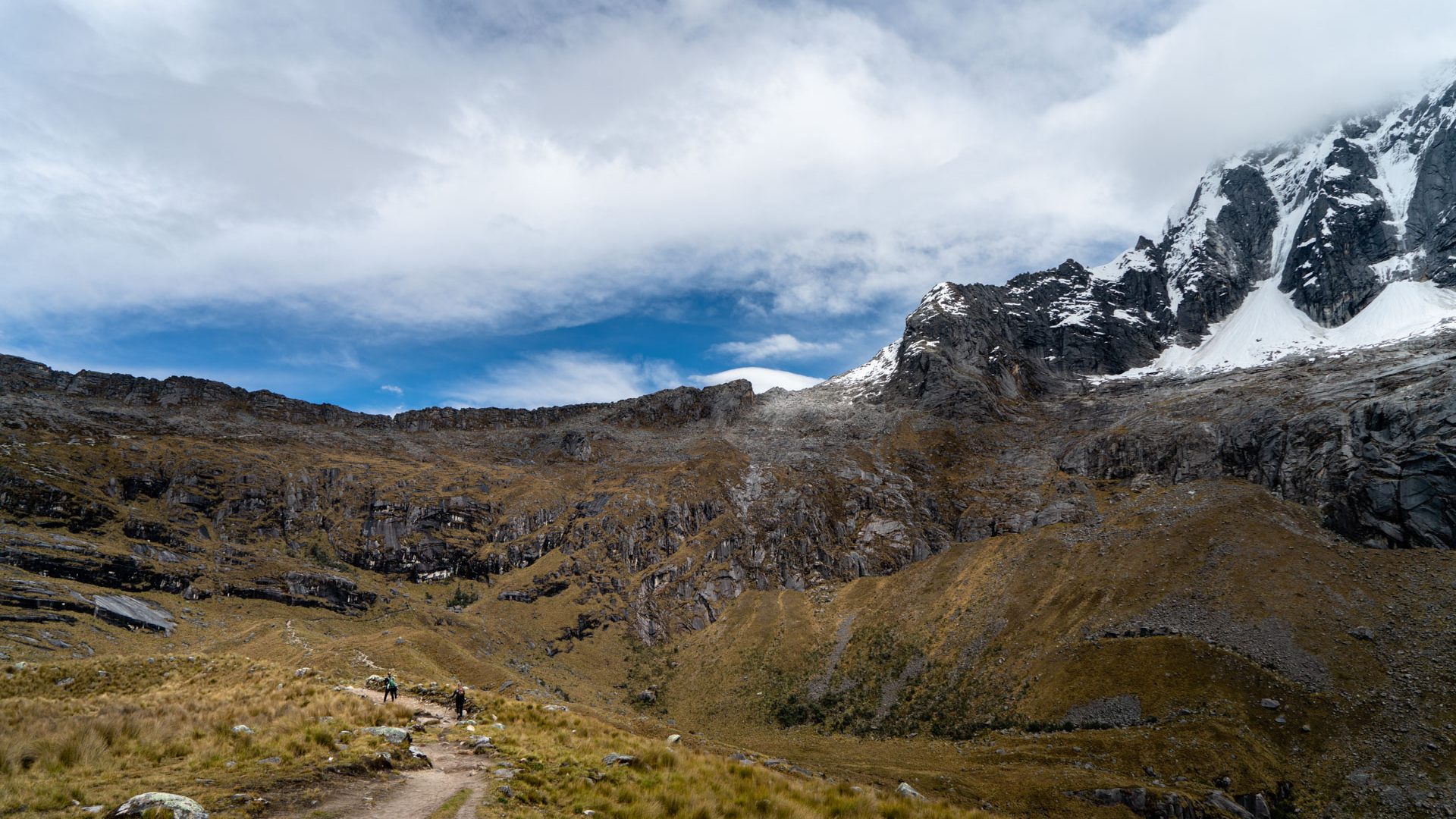
The slog
The path had flattened out. To the right and ahead of us looked like an impassable wall of rock, the slog to Punta Union pass lay before us. Not going to lie, it was tough. High altitude mountain pass = struggle street.
The path didn’t seem as clear when the dirt trail turned to rock and I ended up straying a bit but not too badly. I was lagging a bit behind so I didn’t see exactly where the others were walking. Basically up and to the right is the way to go. If coming from Cashapampa it’s pretty obvious as you get a bird’s eye view.
Partway up I ate the provided uninspiring lunch for the day. Honestly, it just felt like a burden having to both carry it and eat. Surely prisoners eat better food?
In general, I don’t really like provided packed lunches, dry or not. I find juice is annoying since it’s leaky wet sticky bulky trash you have to carry after you’ve finished. Fruit is similar since you can be left with a fruit core or skin peels, which although is biodegradable, you shouldn’t really throw on the ground if you follow the leave no trace mantra. On my trip to the Manu Amazon, our guide found a freaking mandarin tree growing there! Some tours give you chocolate bars as a snack and that’s usually the best thing although you get stuck with a wrapper covered in chocolate after. Fortunately, if you didn’t bring your own trash bag, you can usually use the bag they give you for lunch to store all the trash in but it’s still inconvenient. While I wouldn’t say no to lunch, these days I’d rather just carry a bigger supply of trail mix and graze throughout the day.
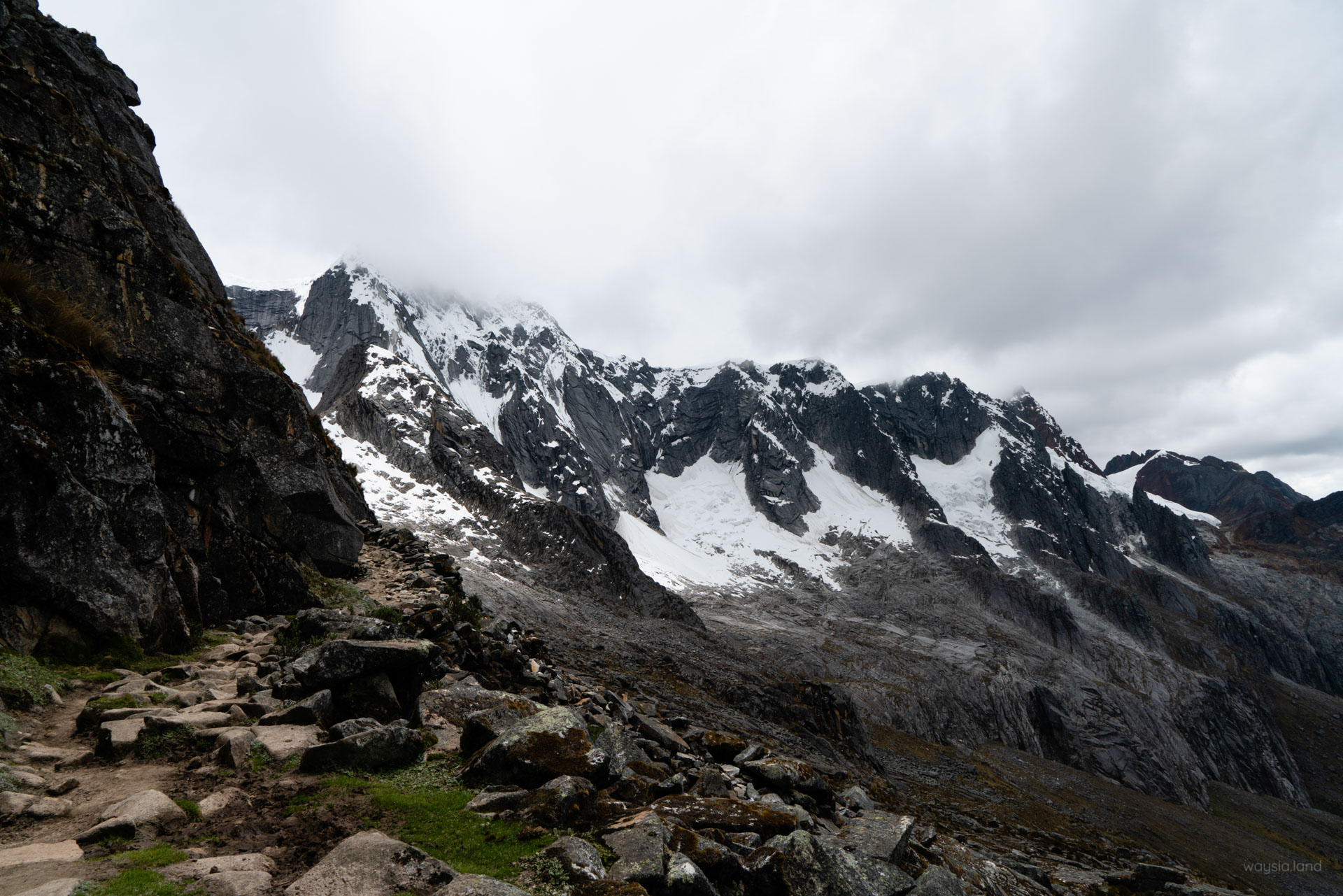
With the dry food finally out of the way and mostly stuck in my throat, I continued up to Punta Union. Upon reaching the top the view opens out to the trail on the other side and it’s quite a sight. I’ve found that no matter where you are in the world, reaching the top of a mountain pass has your effort and accomplishment rewarded with one absolutely stunning view – here is no different.

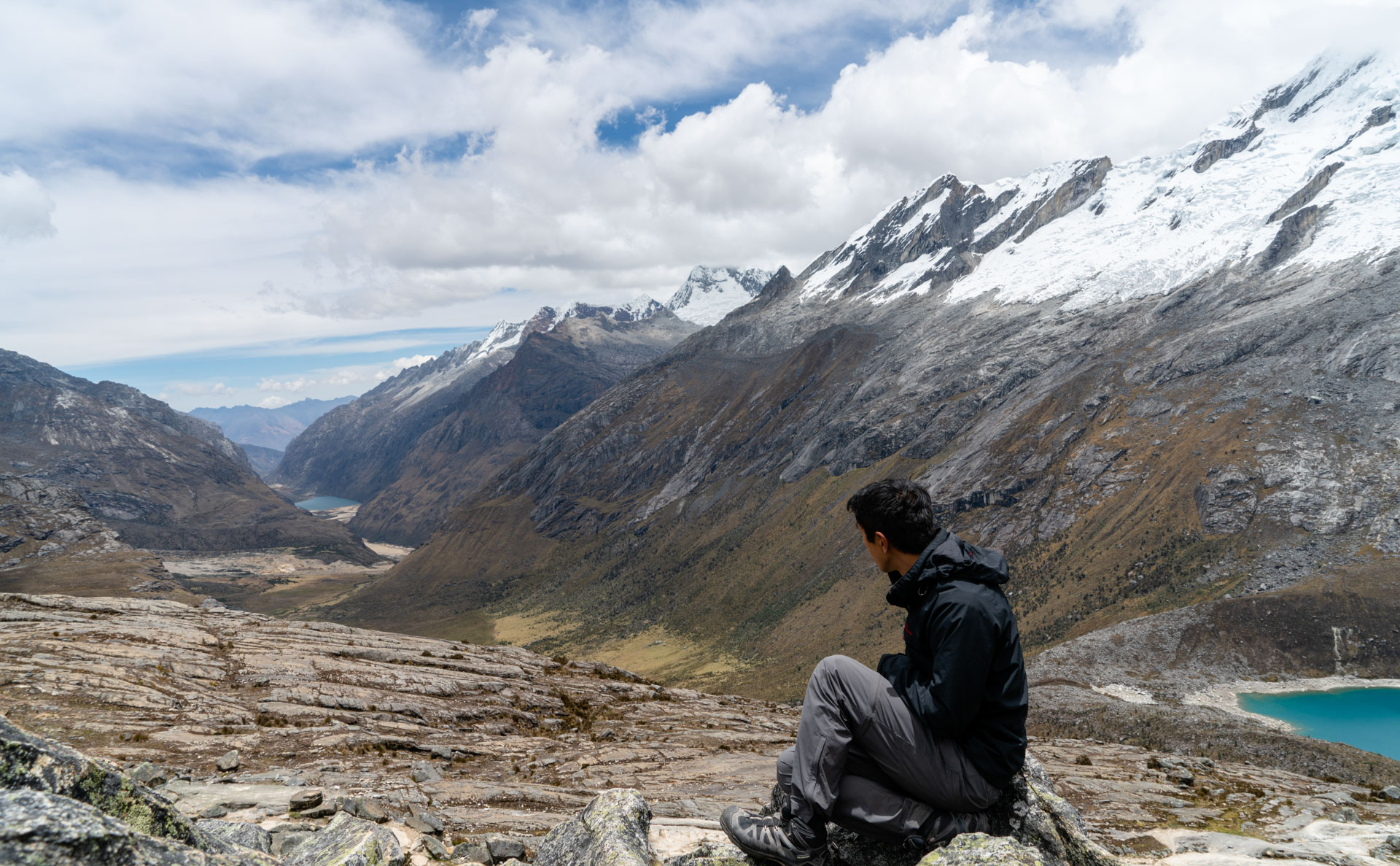
If you don’t mind getting your hands dirty it’s worth climbing the rocks to the right get up higher. I spent a good 45 minutes up there and unless you hike fast, you normally don’t get such luxuries to stay and smell the roses on group treks. People generally like to walk fast and you also have a schedule to stick to. Come to think of it, all tours are usually like that.
However, in this case, I was 4th last.
One of the guides was walking at the end of the group while the other was up ahead leading the pack. I don’t know if it was because his wife and his very young child were doing the trek and taking it easy, but he was a very patient man and always walked with the last person. So I basically had the time it took for him to catch up and then some.
It was time to move on so I started climbing down and made my way to the next campsite. Shortly after I was greeted by this little guy:
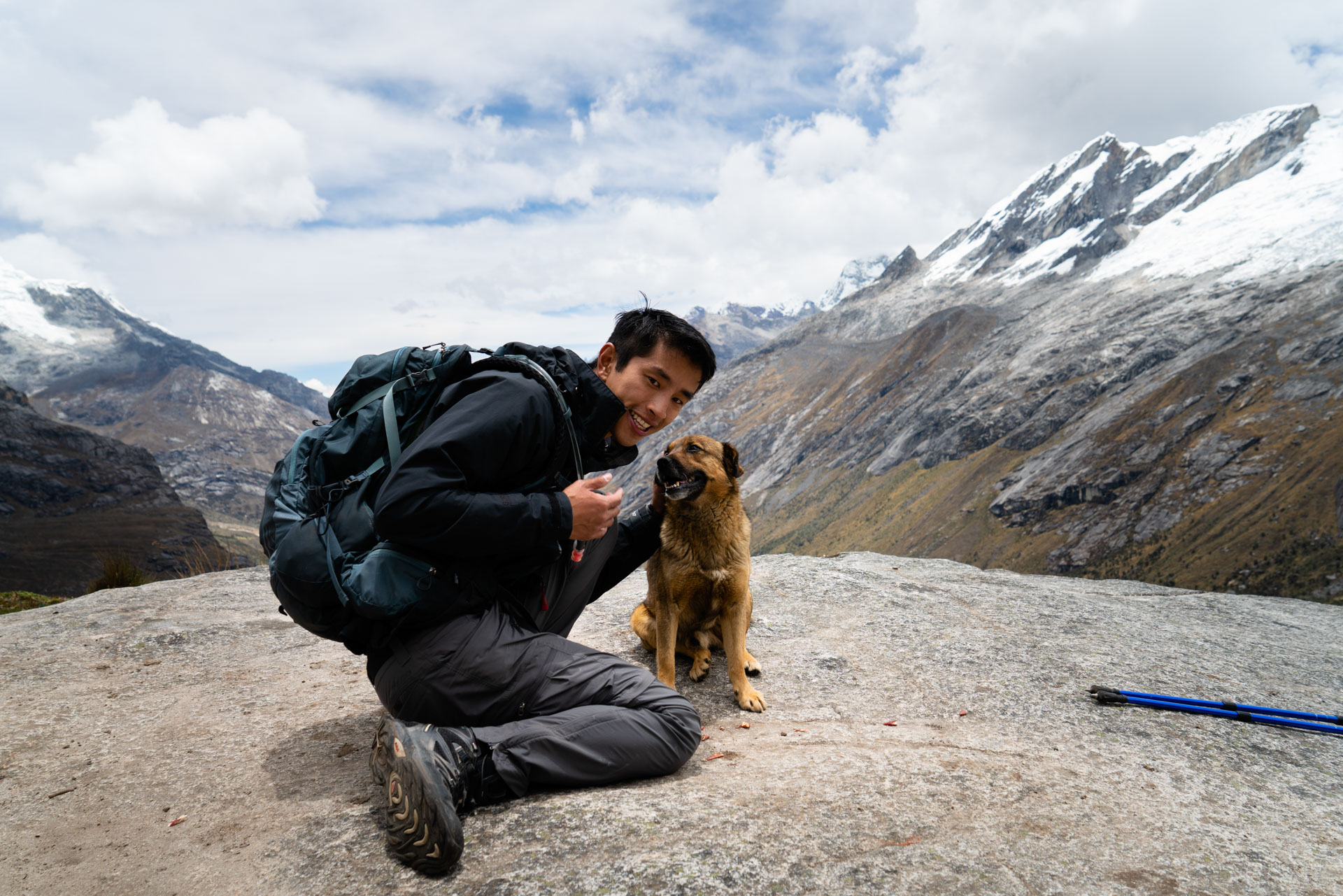
Despite taking my time at Punta Union pass, I still arrived very early at the campsite – something like 12:30 so I spent some time taking photos and exploring the immediate area.
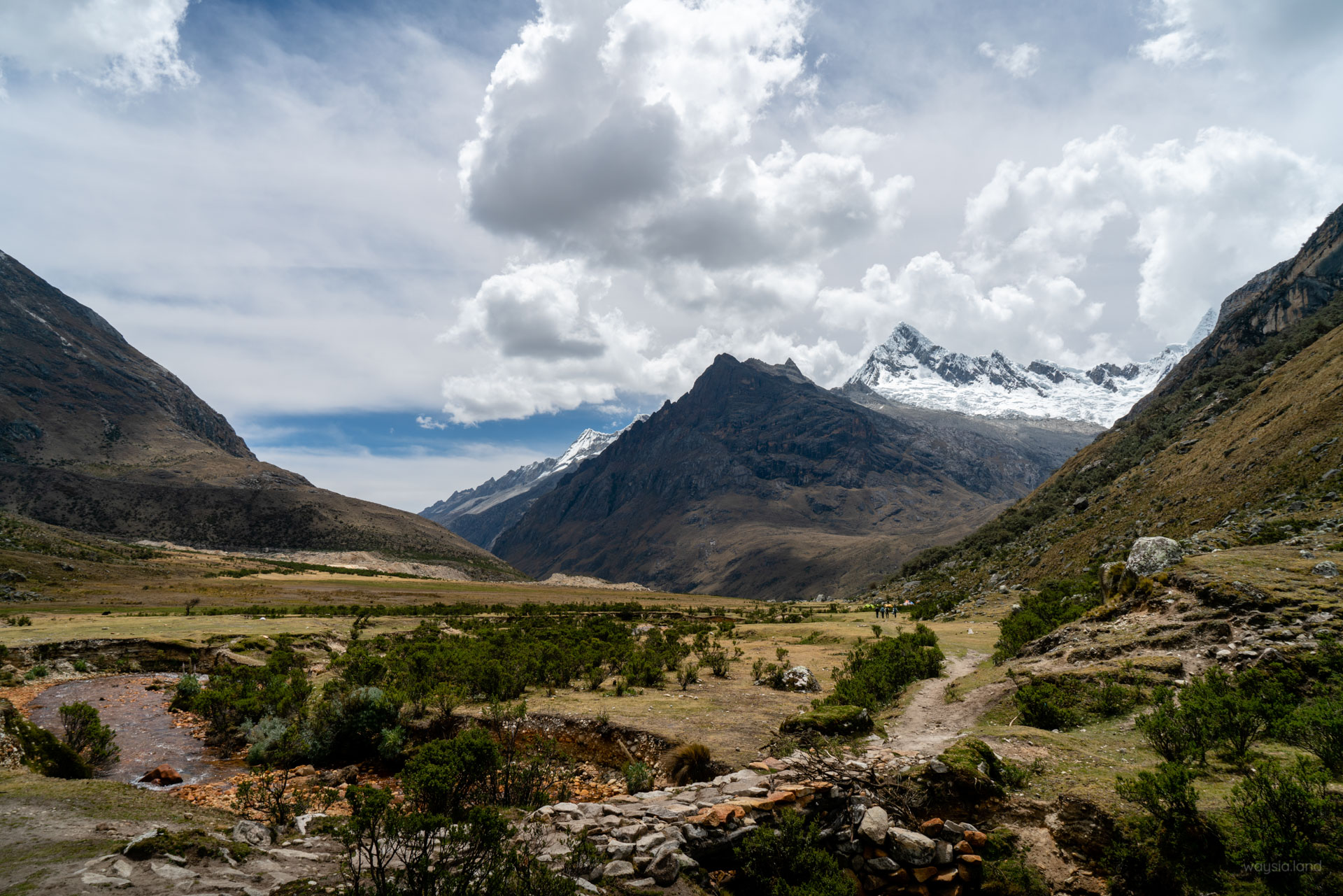
Seclusion on the Santa Cruz trek
The campsite for today was Taullipampa, which is basically nestled at the fork to the optional glacier hike.
Turns out the only other tents I saw were at this campsite and they were packing up, not settling in. We camped further away (see tents in the distance in the above photo) which afforded some more privacy and wasn’t directly in the thoroughfare like these tents I had just passed by.
Speaking of other trekkers, I passed a group heading in the opposite direction around Vaqueria and another while I was descending from Punta Union – which in all likely hood, the tents belonged to them and their porters had yet to pack up. Other than these 2 incidents, we didn’t see anyone else on the entire Santa Cruz trek.
Talk about seclusion!
Funnily enough, one of the guys in my group was talking about how this trek was very much on the beaten track. In the hiking community that may be so but I feel he was also half talking out of his *ss. In comparison to the Machu Picchu treks which have 100s of people doing them daily, the number of people I saw on Santa Cruz just doesn’t even come close.
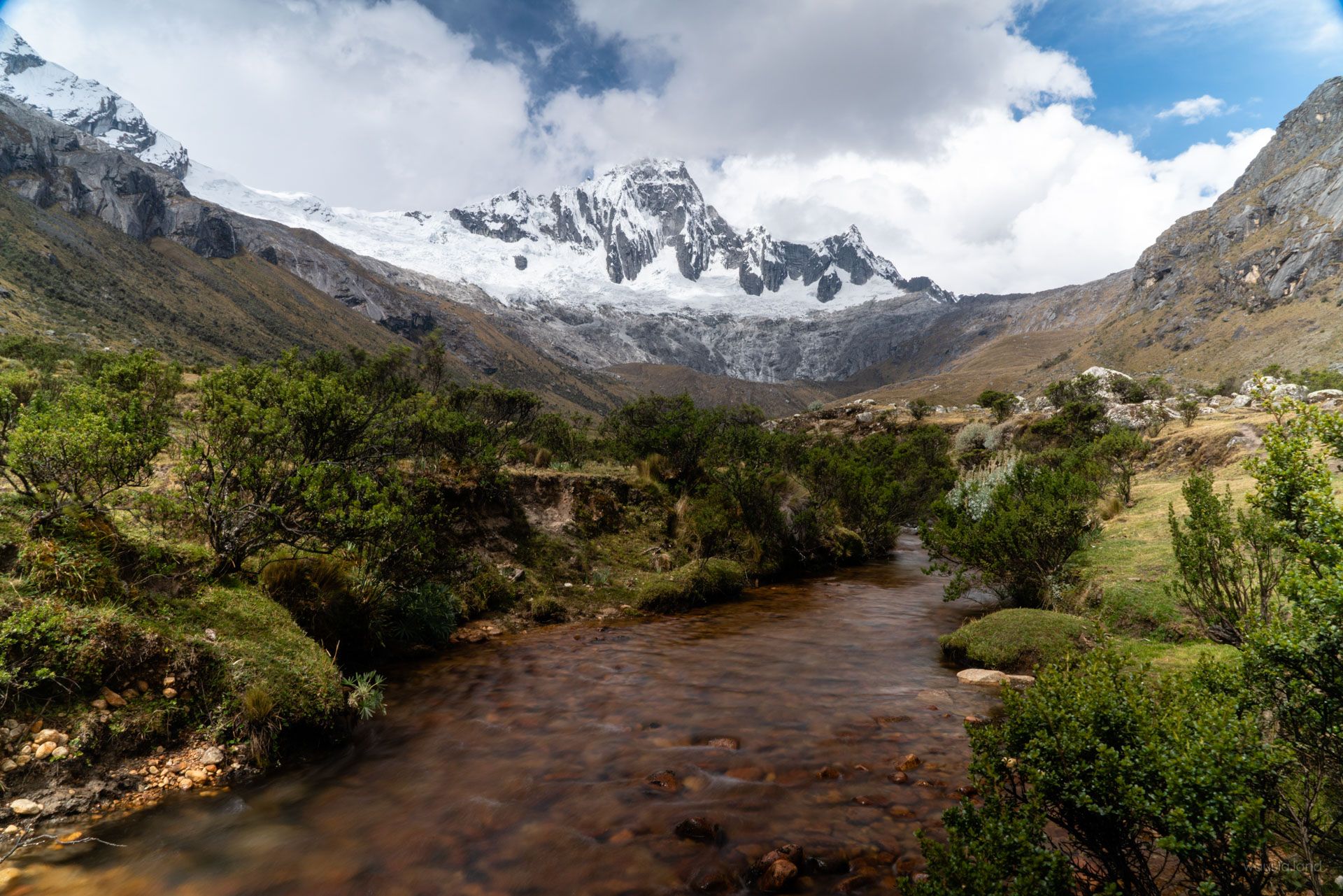
Water purification
On a guided trek, they should provide you with boiled water each day (except the first) however, I would clarify this beforehand because although on Santa Cruz it was provided, this was simply not the case on my Huayhuash trek.
If provided, you simply need to bring something to hold it in like one or more bottles or a water bladder. Ensure you have something large enough as you are given this at the start of the day. It’s not feasible at any other time even at the campsite since they’ll be using the time and pot to cook – not boil you water. Most people will typically require about 2L to 3L per day of trekking (excluding any additional drinks at the campsite) and I wouldn’t recommend you bring anything smaller than 2L total. Keep in mind you need to use some to brush your teeth. I’m specifically mentioning this because people on our trek were not briefed. One came ill-prepared and didn’t bring enough water storage. When something like water is concerned, this could result in serious health or life-threatening issues. Fortunately, there was spare they could have but it could have been easily avoided if the companies briefed everyone who signed up for a guided trek.
If you’re trekking without a guide, there are numerous rivers in the area where you can fill up at. Each campsite had a river nearby and parts of the trail had access to rivers too. Keep in mind there are farm animals and a lot of the water sources run parallel to the trail, so water purification is required.
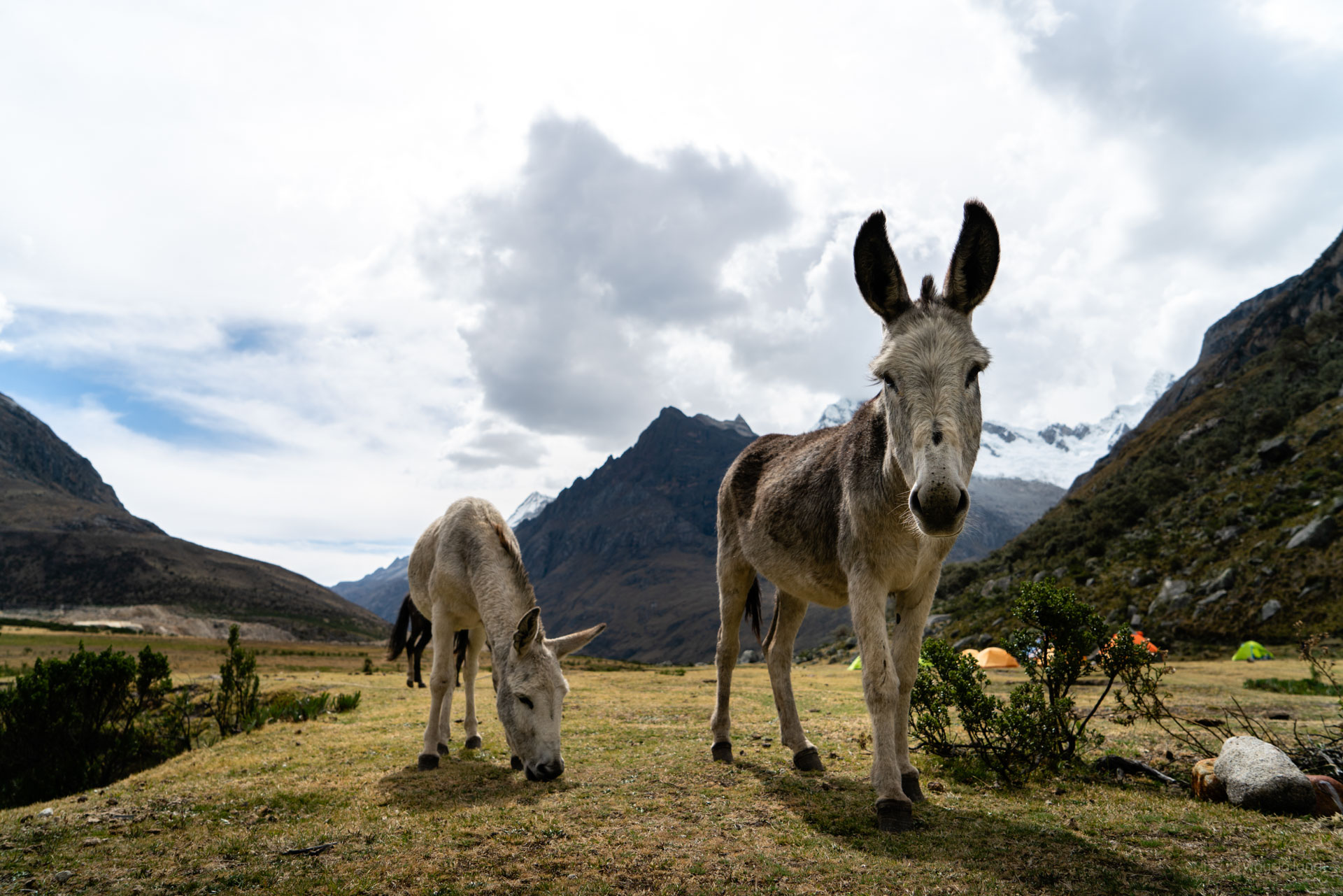
It was about now that it was mentioned to those doing the 3-day variant on our trek (2 people), that they could spend the rest of the day doing the optional hike to the glacier and then returning to camp. They would of course have to complete this without a guide as they were helping to set up camp. The subsequent day they would finish the trek (no more camping for them) and make their way back to Huaraz themselves. Asides from having to complete the rest of the guided trek, without a guide and organised transport, they had to do it without the assistance of donkeys. One guy packed light so it wasn’t an issue but another didn’t know he would lose the donkey’s help.

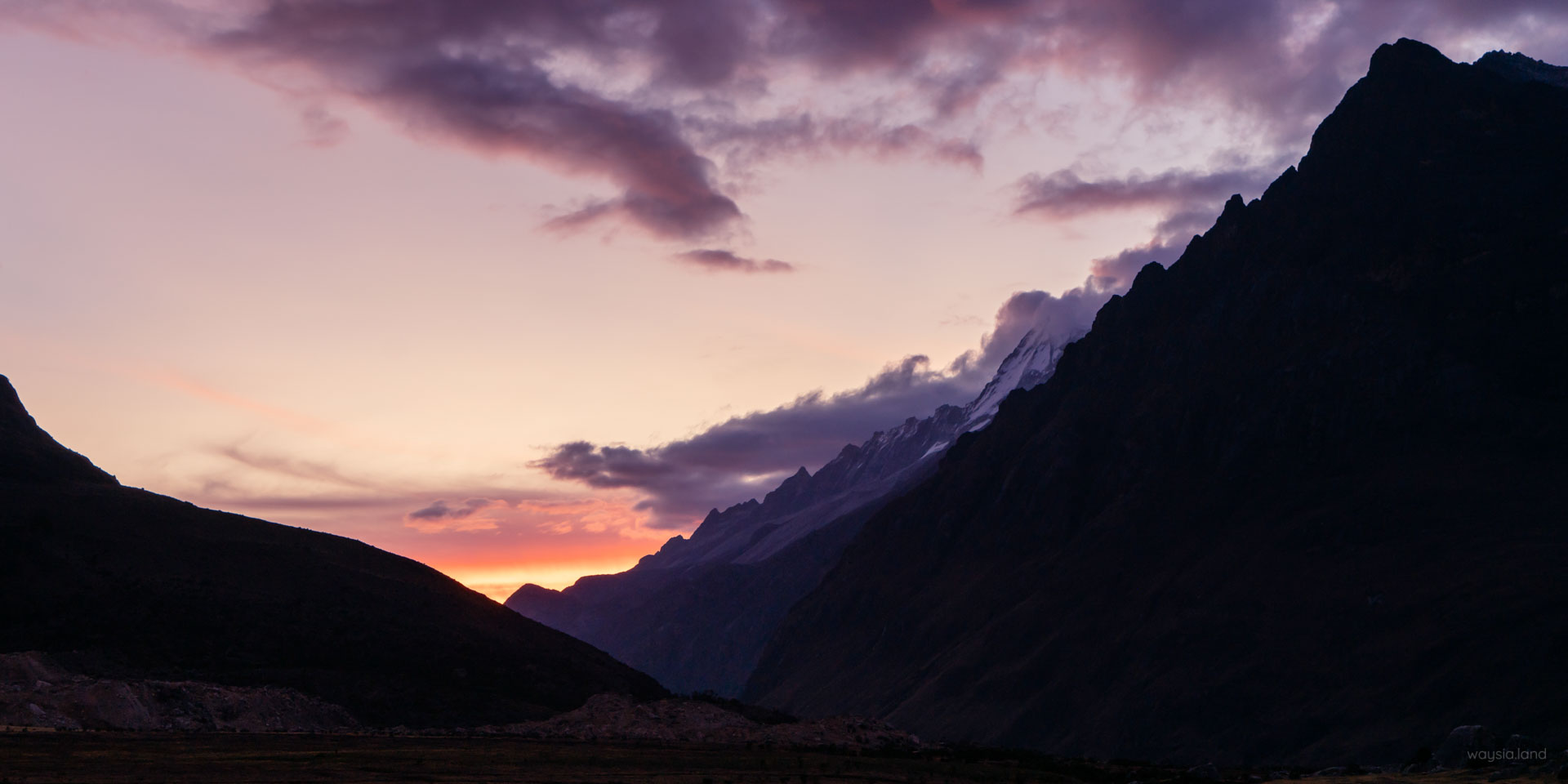
Toilet situation on the trek
By now you might be asking yourself what the toilet situation is. Well, there are no toilets at the campsites this trek.
To those of you who haven’t closed the browser window… feel free to skip this section if you don’t want to be grossed out.
You will either be given a toilet tent or you have to “crap in the woods”. A toilet tent is a tent set up around a makeshift hole in the ground dug by the porters. You can see evidence of former toilet holes by spotting shallow 30cm(1ft) holes in the ground at the campsites. They may or may not be covered by grass depending on how old they are.
Watch your step.
At the first campsite, I accidentally stepped in one but it was ok since I had my boots on still and they fill the hole back up with dirt. HOWEVER, the ground definitely felt softer than usual… Despite being covered I’d caution stepping on or near them especially in flip flops. If it’s been raining who knows what will seep to the surface nor who knows how shallow that dirt layer really is. Seriously, watch your step.
You’ll want to pack toilet paper, wipes and a small bottle of alcohol sanitiser. How much toilet paper you want to pack is up to you and can be hard to gauge without prior camping experience. 1 roll is probably the most common but 2 wouldn’t be unheard of just in case.
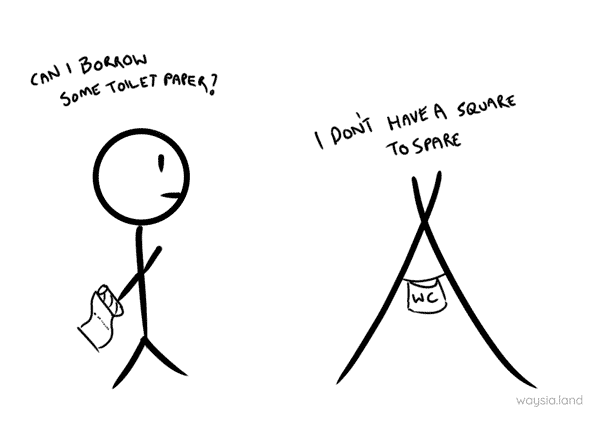
On our trek a toilet tent was advertised but when asked “where do we go?” they demarcated an area for boys and an area for girls which turned out to be a blessing. A toilet tent sounds civilised but according to the guides, in reality, people hate it and would rather crap in the woods so they stopped offering it. Why? Well, the sights and smells of the previous users…
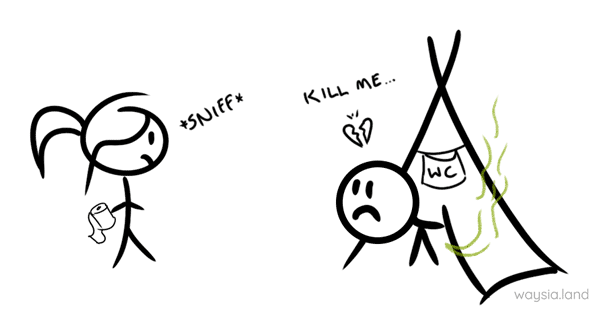
So how do you crap in the woods? The proper way is to find somewhere to go, about 50m away from water sources, then dig a hole about 8inches deep and about 10 inches wide. After you’re done, bury it and put a rock over it. This is actually far easier said than done. Some ground is packed hard and you simply can’t dig without a trowel. You can use a rock/stick/trekking pole to assist but even that can be hard. Some people thus resort to their own creative methods.
So it’s morning, you’ve woken up early to avoid potential embarrassment and you think you’ve found the perfect spot. But no matter how far you’ve walked, you’d be surprised how far you can actually see, and subsequently how far others can see. No matter how small you try to make yourself it might feel something like this:

However, there is hope.
Your best bet is to find a big rock or somewhere directly out of the line of sight from your camp and the trail. But as usual there is a caveat… chances are you’ll see “evidence” of previous use where people had your same bright idea. 💩
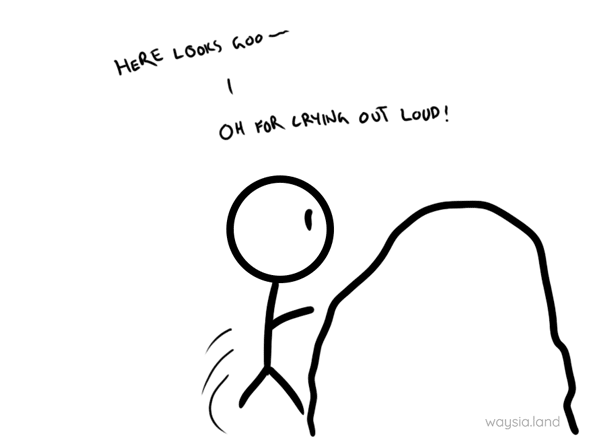
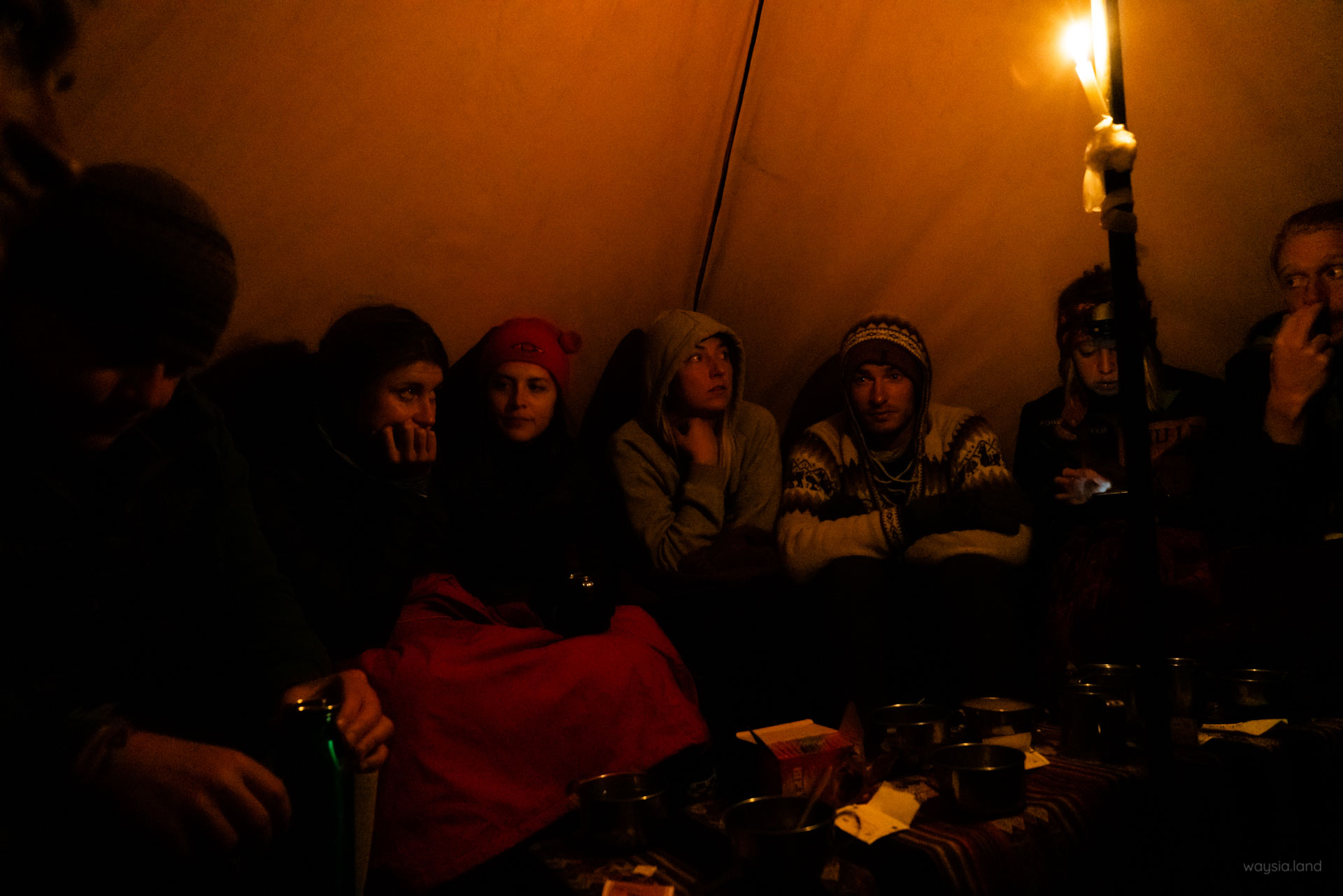
At the second campsite, it was here Katie started feeling really ill but amazingly there were 2 nurses in our group. She was unsure what she had but our group had that covered:
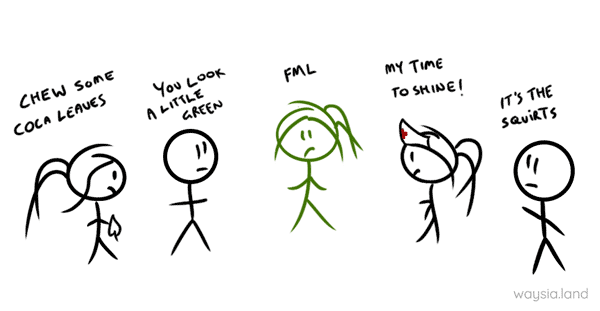
On a serious note, the diagnosis ended up being a milder form of altitude sickness. In 2 days we had just gone from roughly 3100m in Huaraz -> 3800m at the first campsite -> 4750m at the pass -> 4180m at this campsite. She was travelling with 3 friends but she was the only one affected. It just goes to show you that altitude sickness affects people differently and the importance of acclimatisation.
Throughout the night random conversation topics appeared. Consequently, I now know that the cup is the best feminine hygiene product to use on a trek. Who would have thought?
It was also about here where I decided to test my Steripen Pure+ now renamed to the more appropriately named Steripen Ultralight. We were provided boiled drinking water but I wanted to test it in case I would need it on future trips (I did). I did a bit of research prior to buying it but the idea of UV light killing the bacteria made me hesitant despite what I had read saying it was really good. I went down to the river and filtered half a litre of water and took it back to camp. I mentioned my hesitation and my new friend Kris, being an avid trekker, grabbed it and chugged it down without fear. She possessed multiple filtration systems but the one she brought was a Sawyer gravity filter. I hesitantly filtered a new batch and drank that without issue. Hazzah!
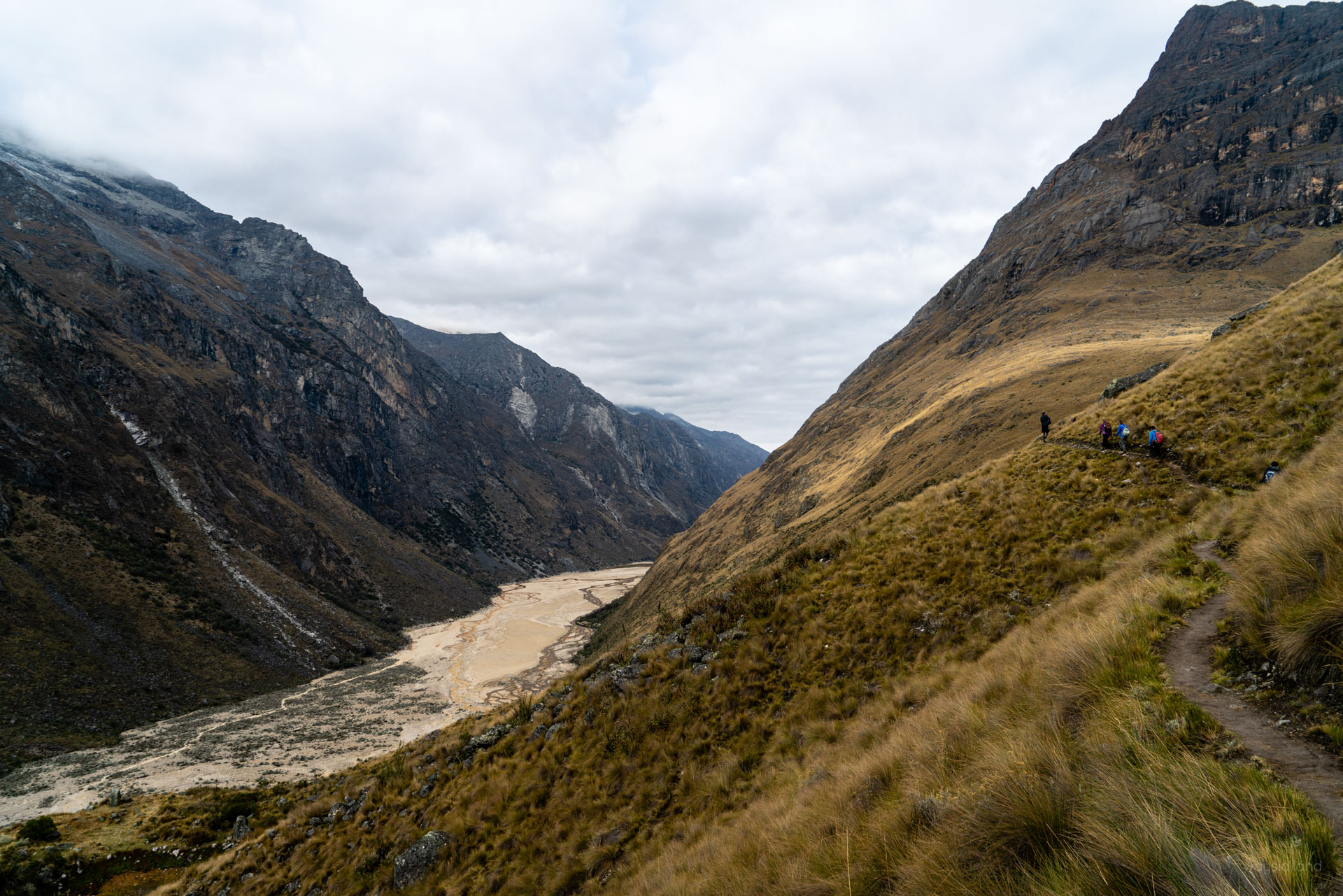
Glacier – Santa Cruz trek – day 3
Early next morning we bid farewell to those doing the 3-day variant. While we headed off to Glacier Arhuay, they hiked towards the town of Cashapampa along the sandy route below.
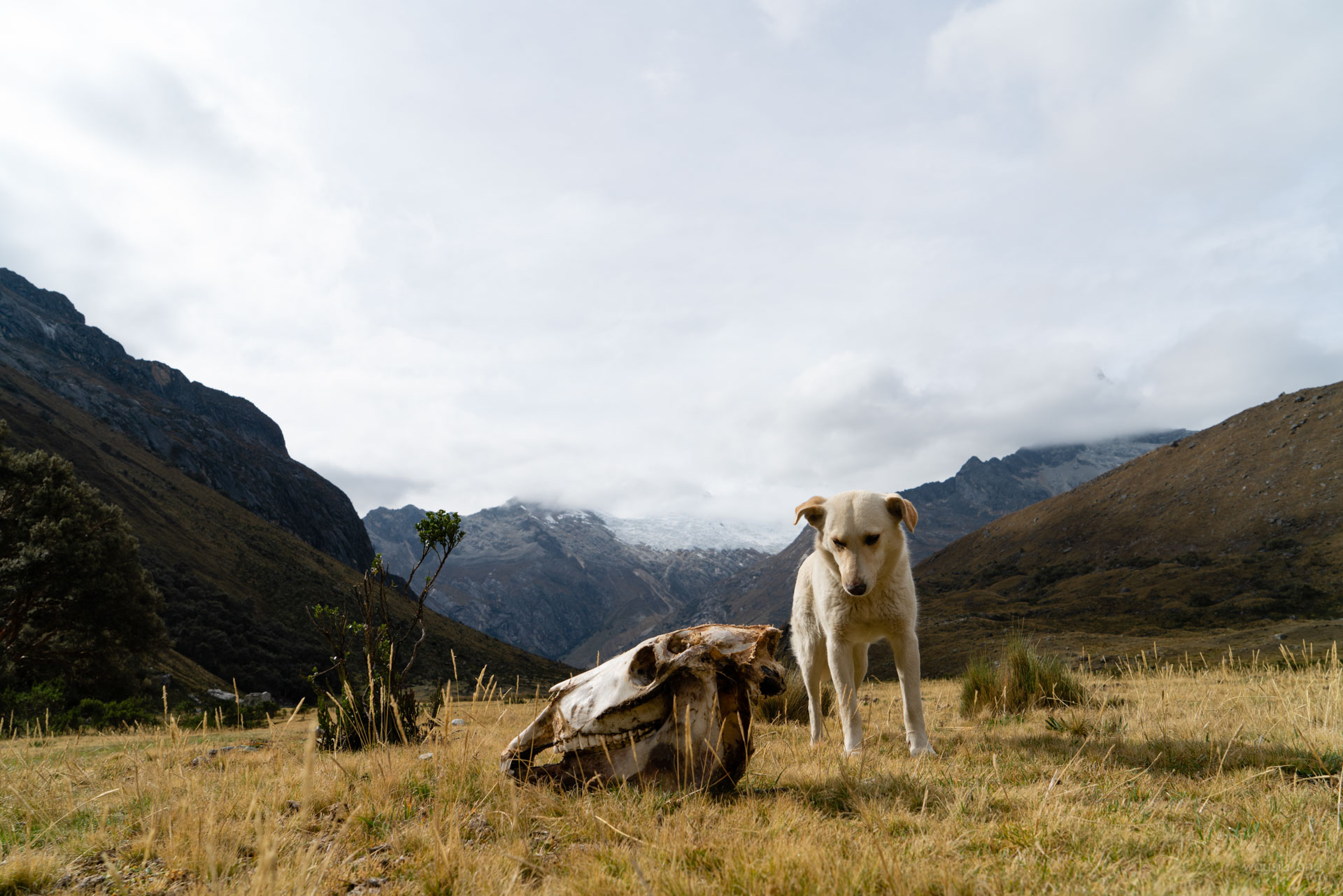
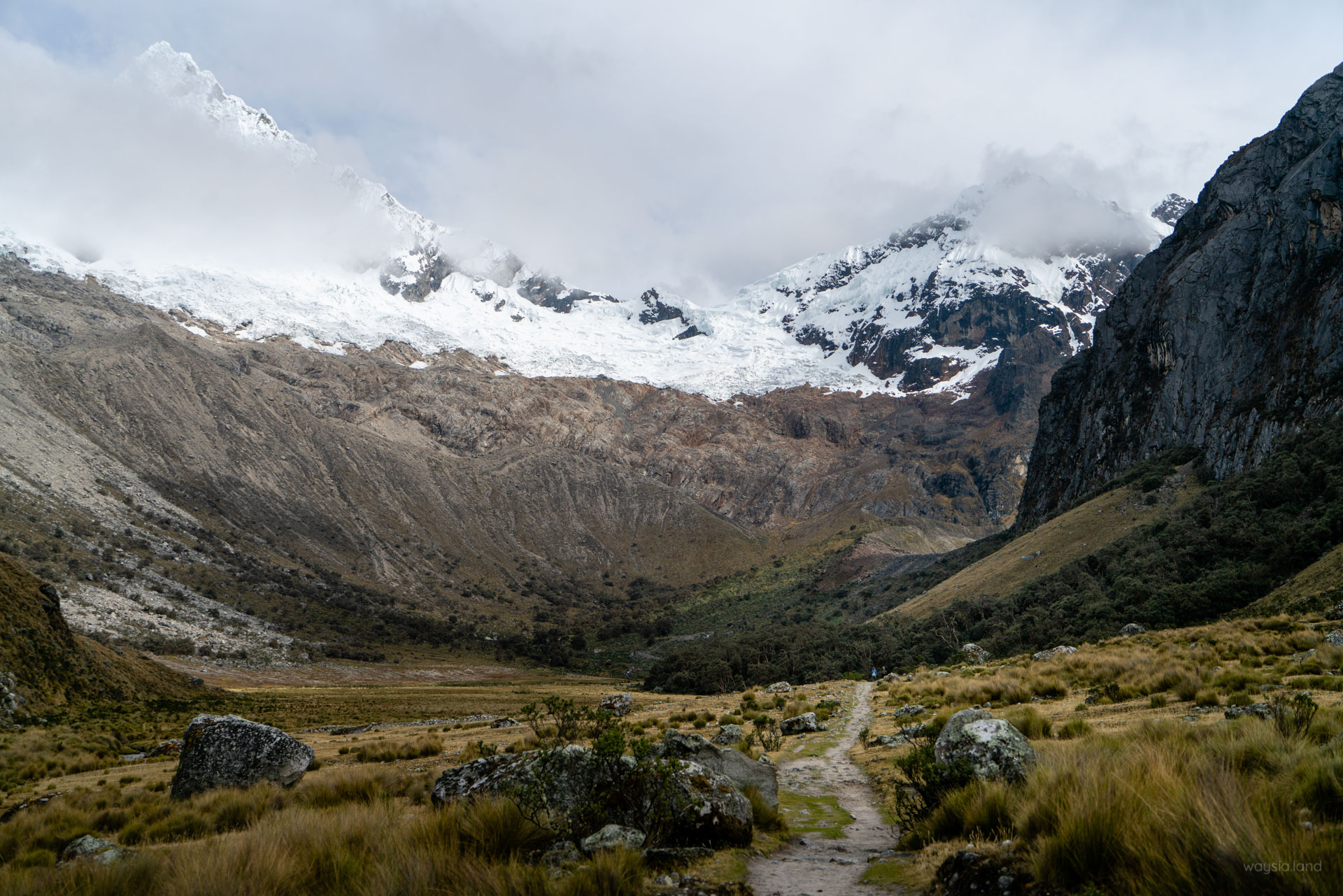
The route to the Glacier did not disappoint. This is an optional hike but I’d strongly suggest visiting it to get the most out of this trek. The glacier itself is just off to the right at the end of the above photo.
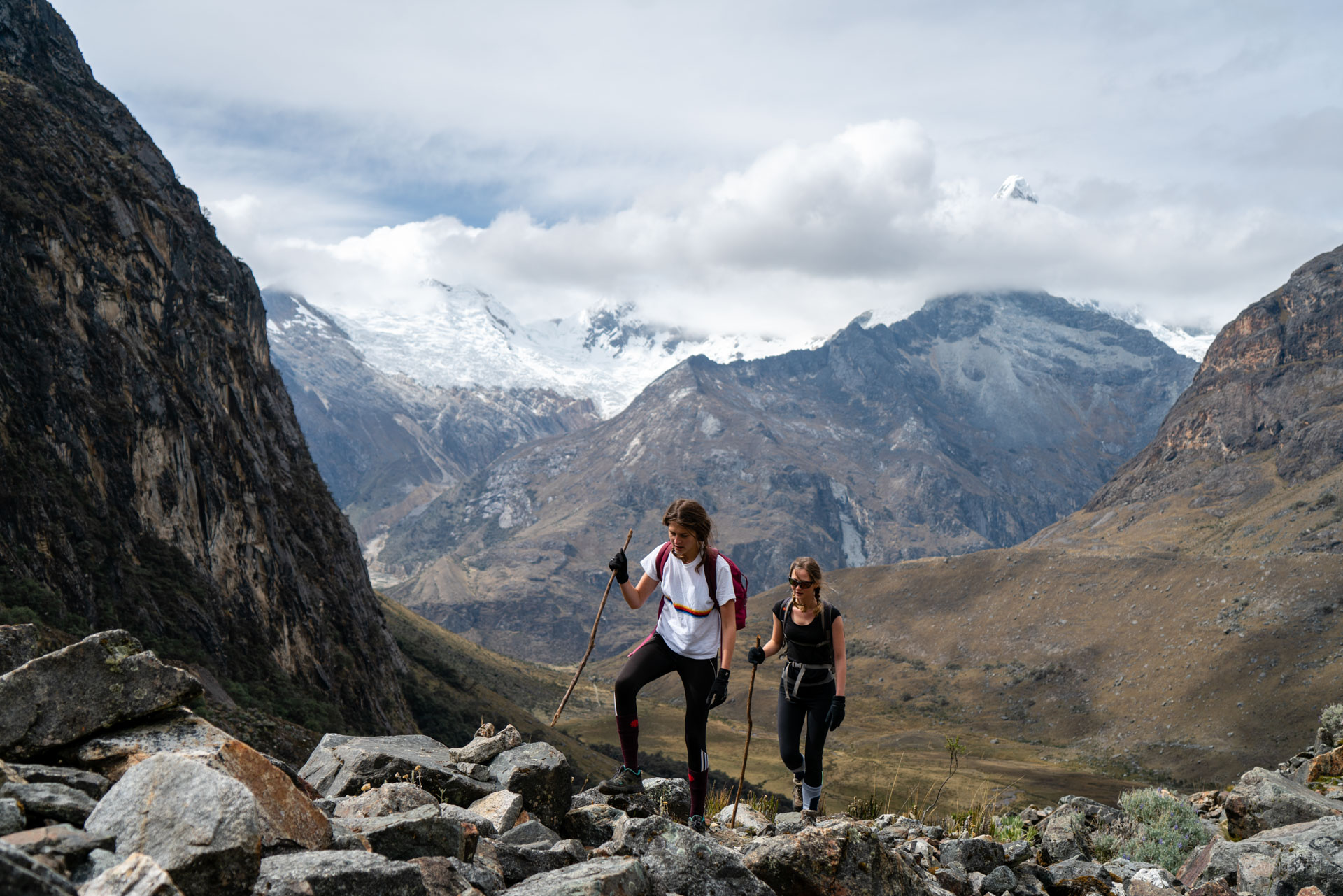
Glacier Arhuay / Laguna Arhuaycocha
There’s a small hill just before the lookout and like all hills at this altitude, simply laugh at your futile efforts.
Once you reach the top, there are a couple of viewpoints you can go to. The first gives a high up view and requires some boulder hopping. The lower one goes right up to the lake. We were given ample time to take photos.
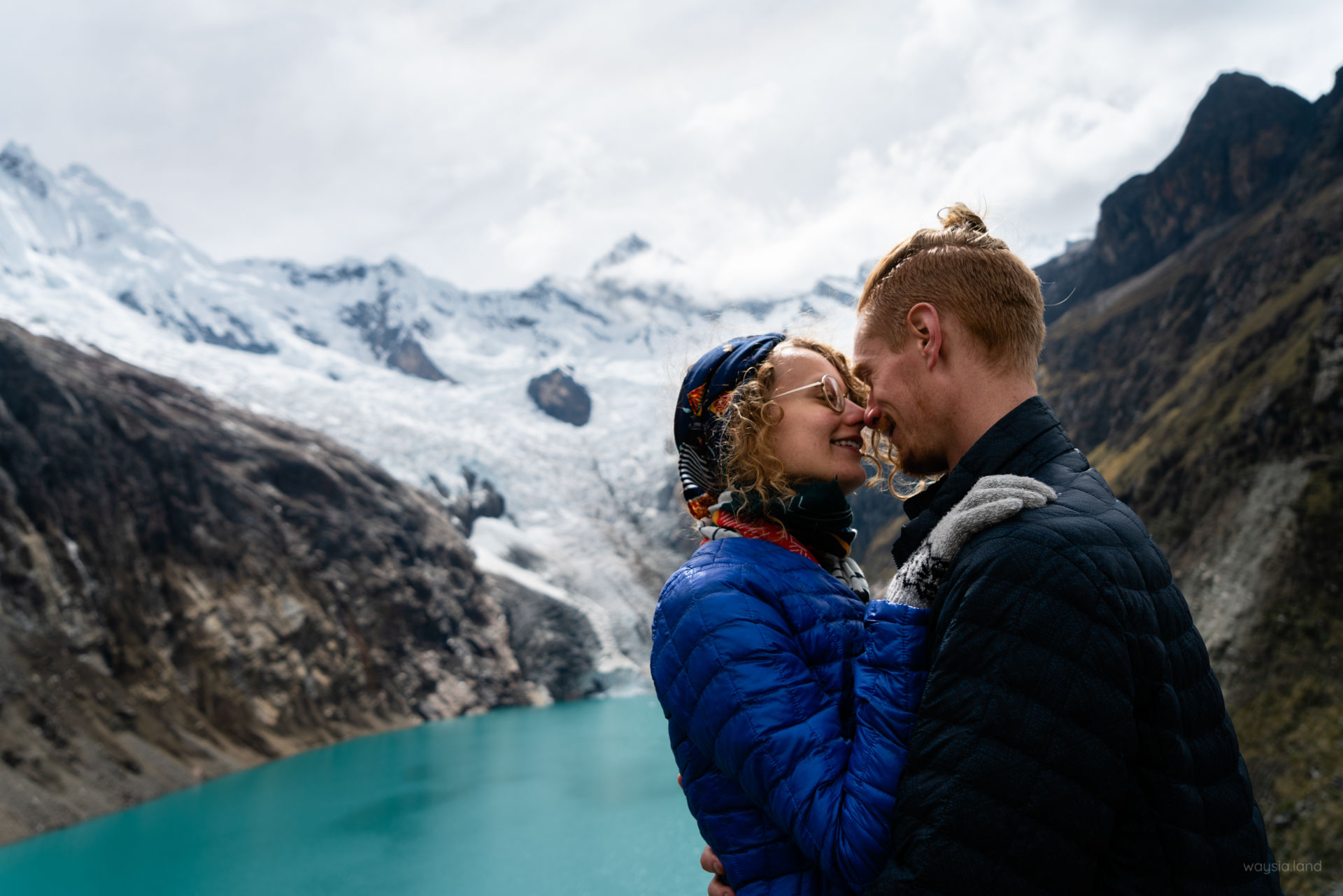
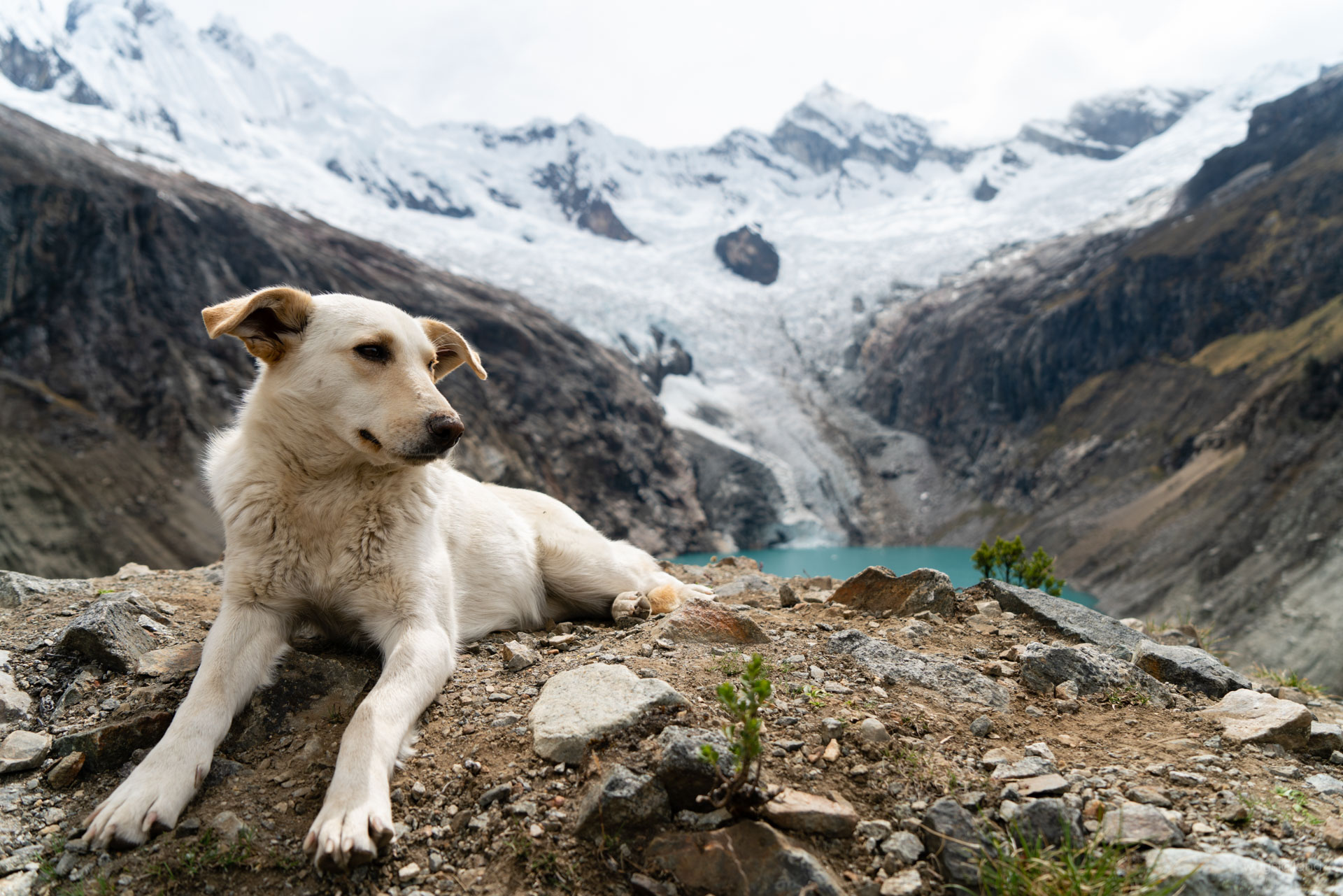
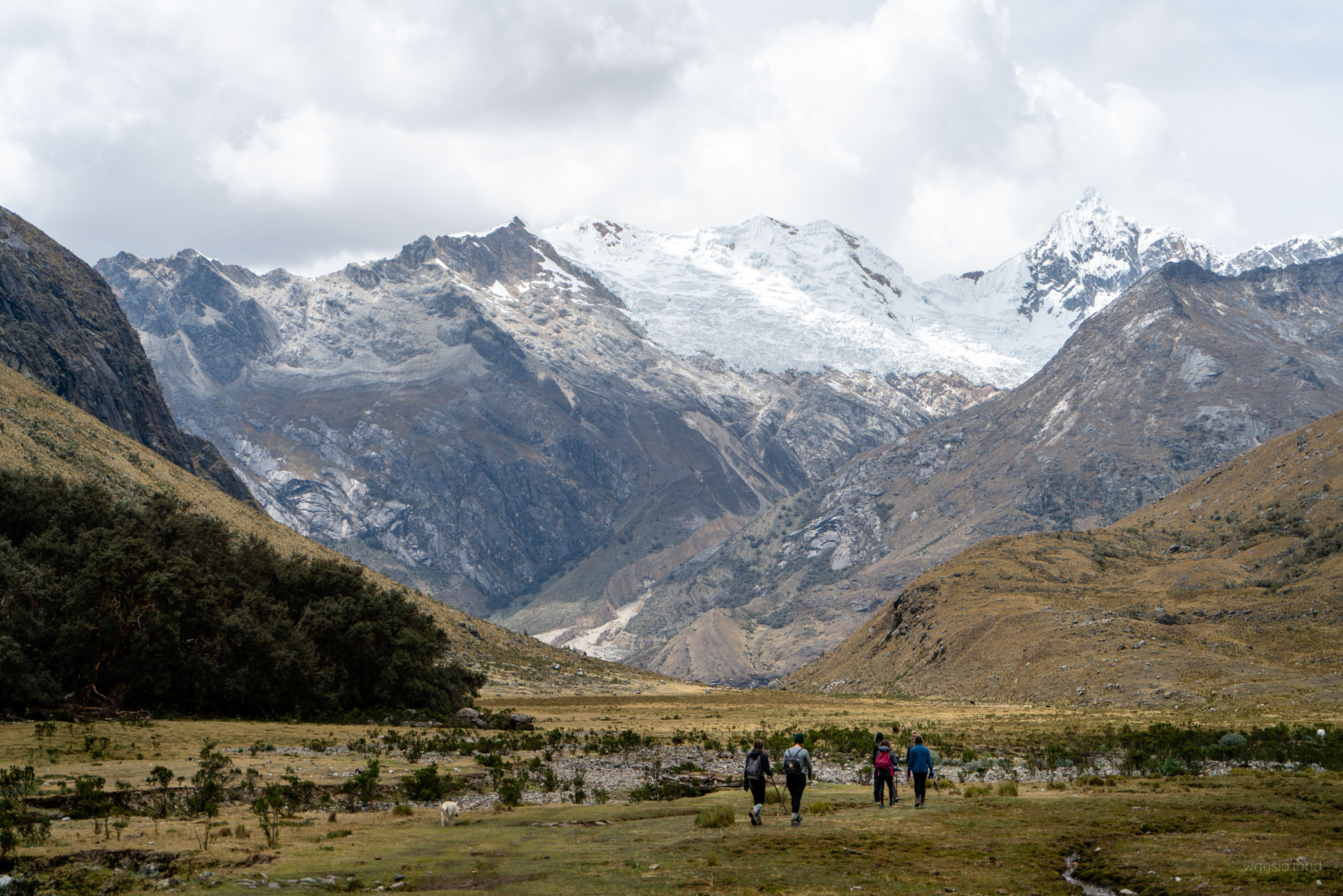
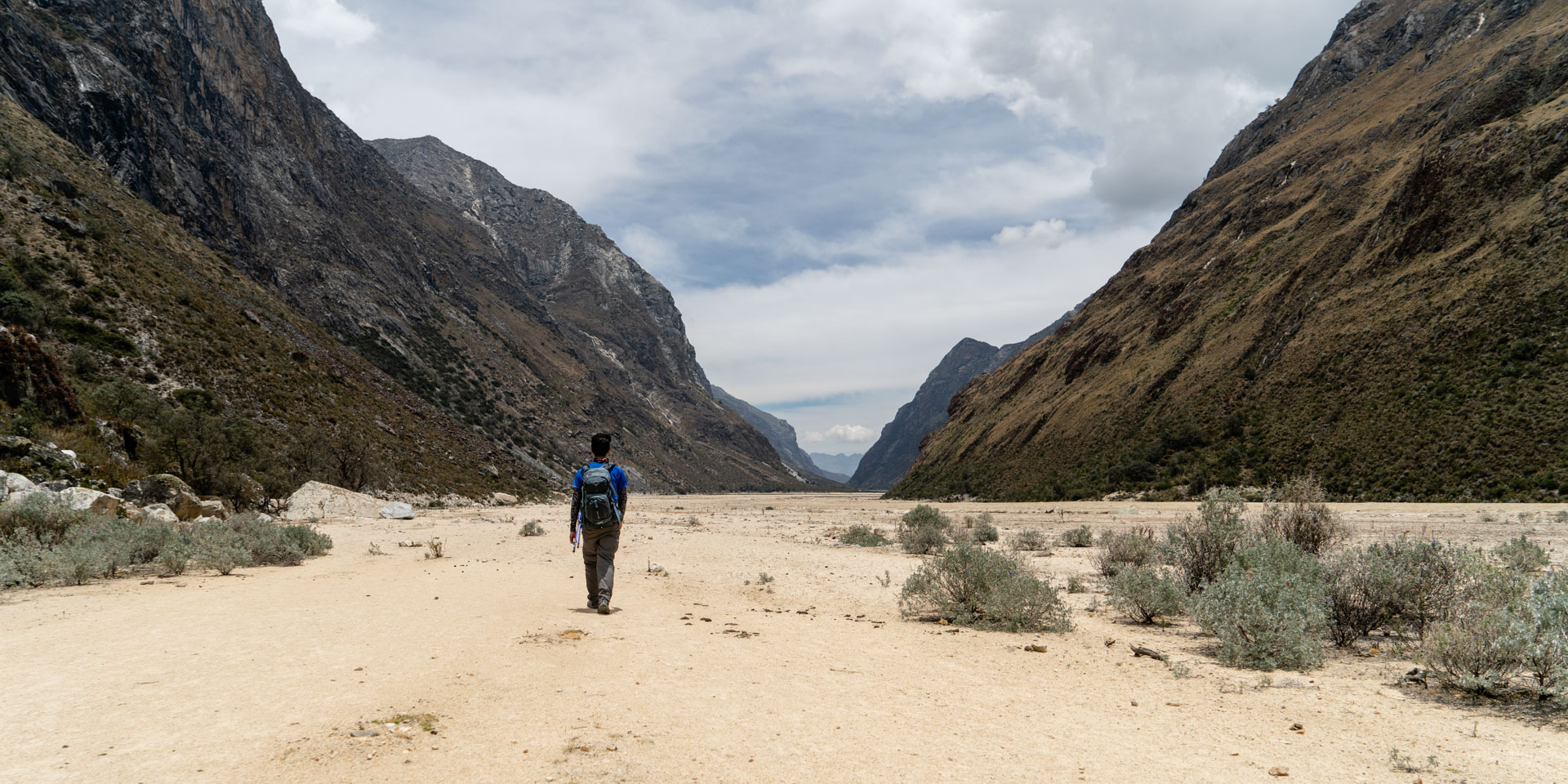
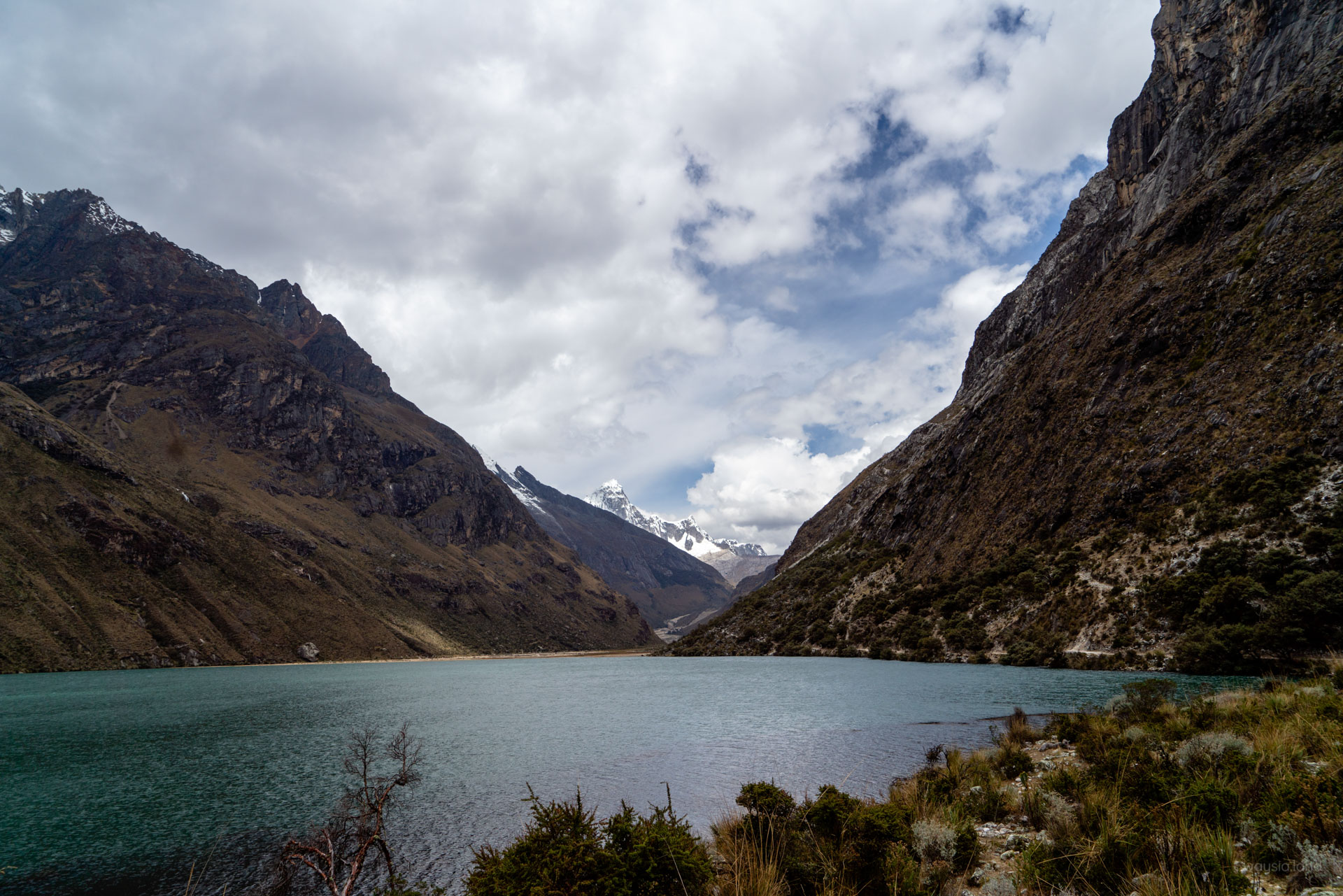
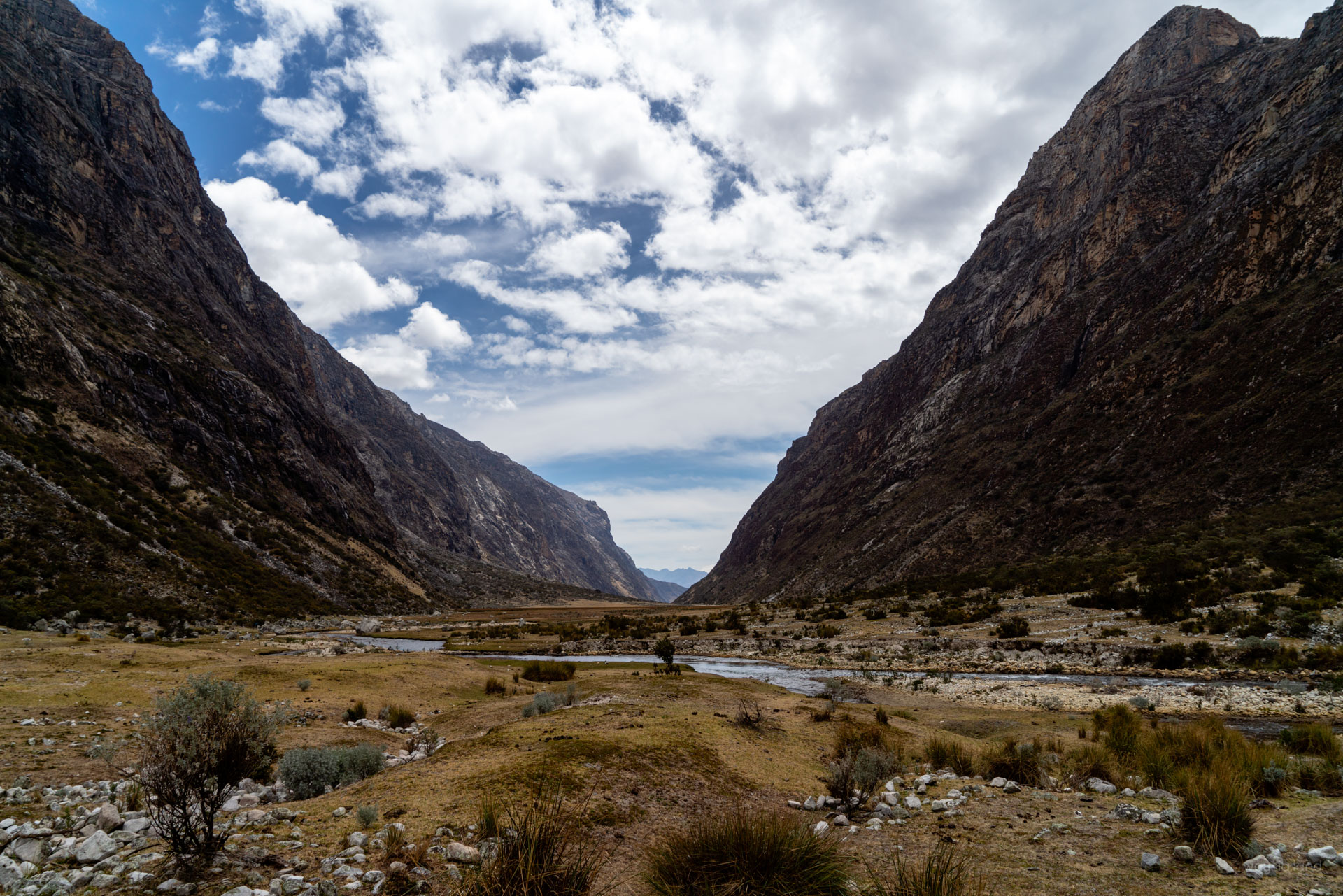
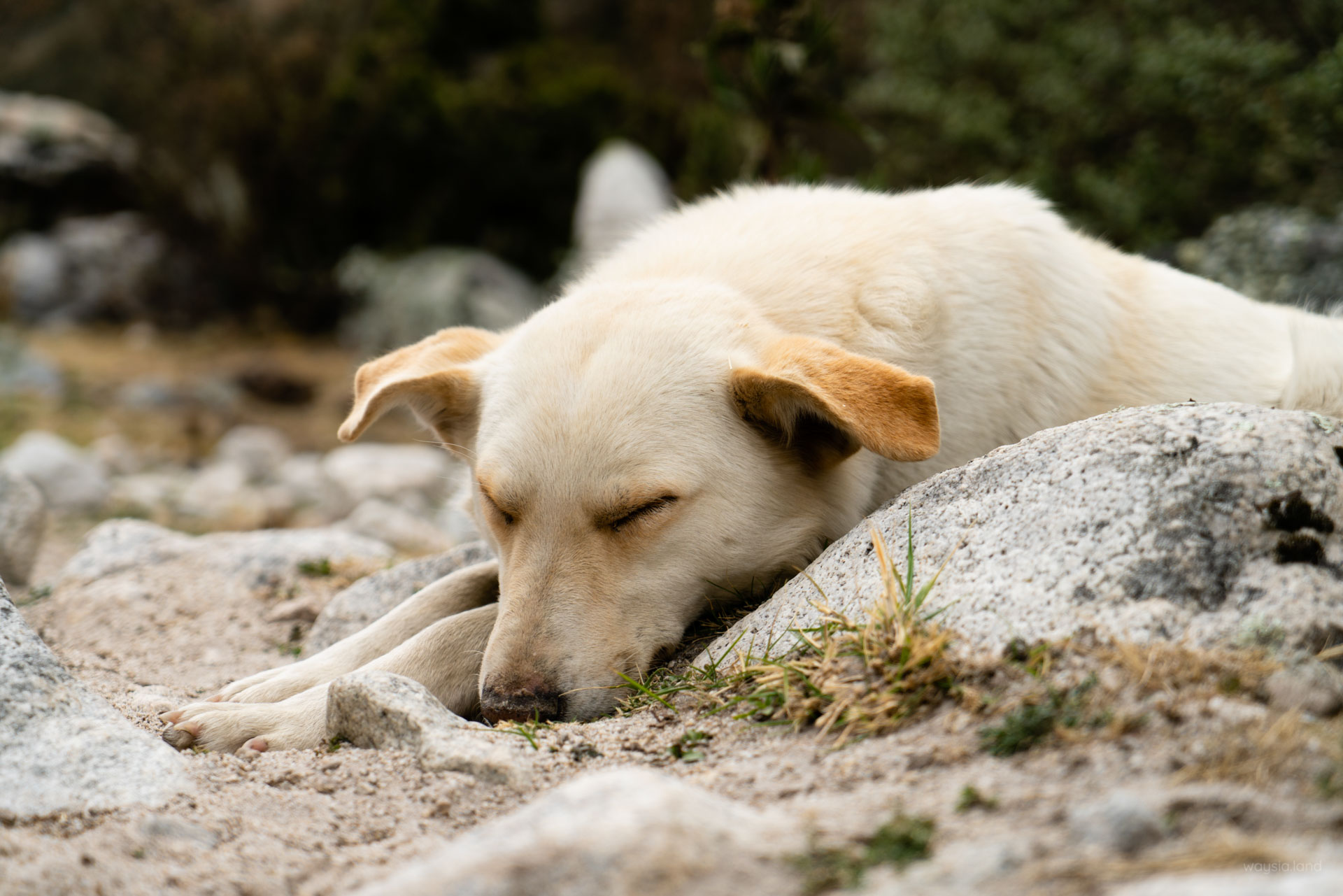
If you take a lot of photos you’re bound to end up walking last. This adorable dog that followed us the entire journey waited for me! It’s not like I was feeding him or anything either. 😍🐶
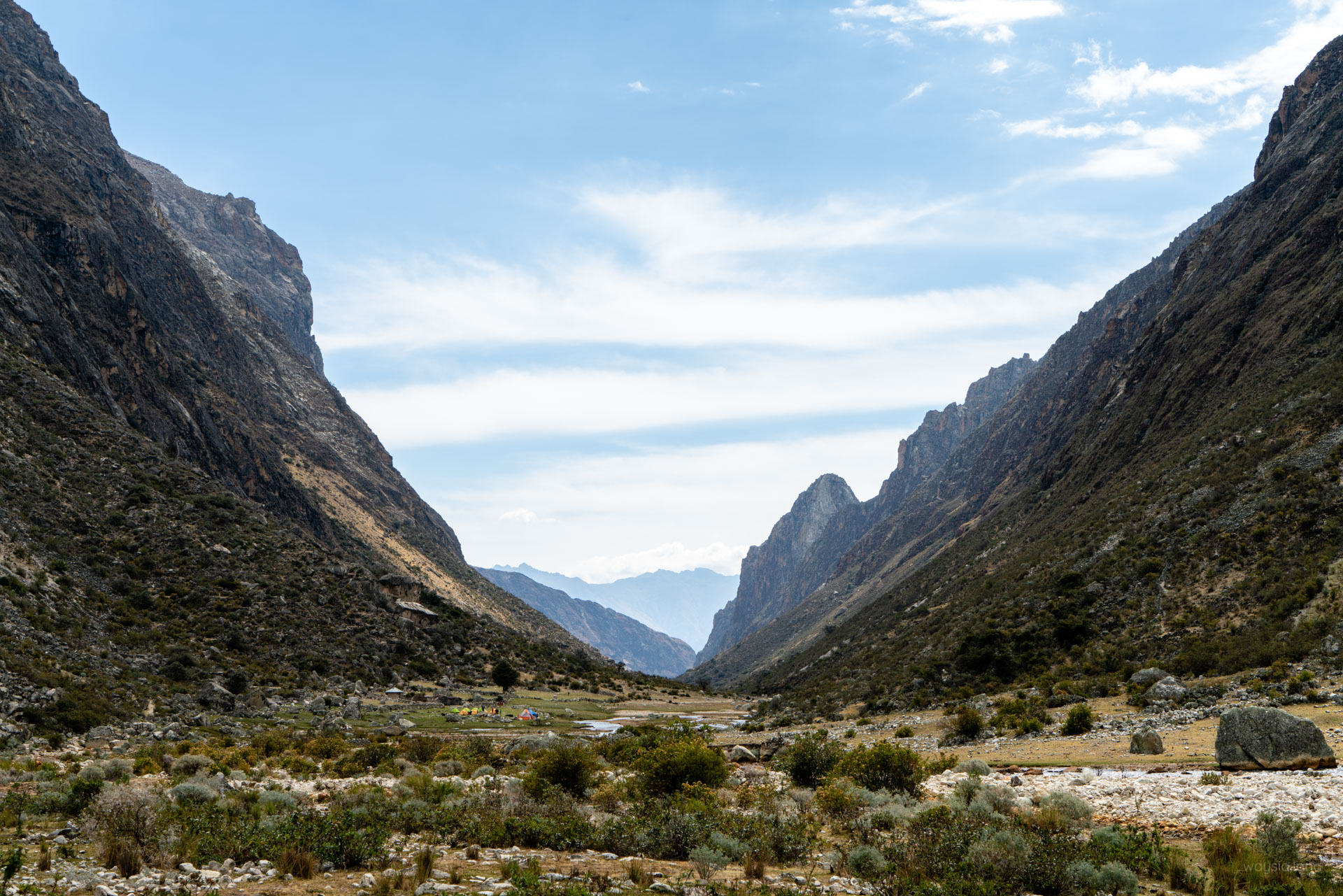
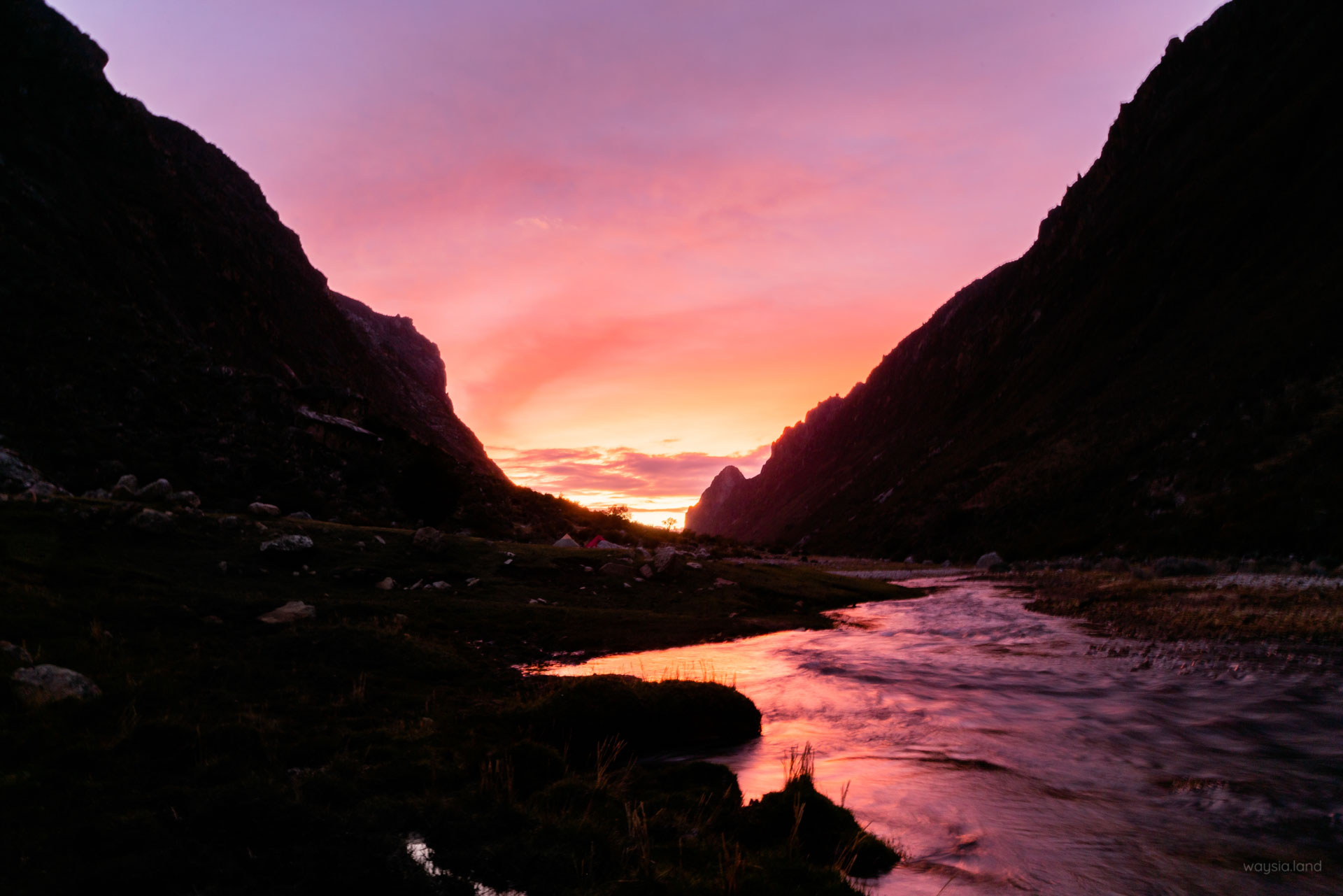
It was at this campsite one of our guides started telling us stories of mega-luxe travellers. Remember, we were all on the budget US$120 trek. It was all in Spanish but it was so highly animated I felt I could understand perfectly. All the gestures; pretty unmistakable that it seemed like they were getting the day spa treatment on a trek. If they were getting massages… sign me up! But maybe something got lost in translation somewhere…
It was also at this point the guide started mentioning the Huayhuash trek. I wasn’t planning to do it as I had seen some photos and wasn’t blown away by them. I eventually did end up going and it just turned out to be a case of a photo not being able to tell the whole story. I typically don’t look at photos too much so it doesn’t spoil the experience, but if you’re on this site you probably don’t care about that. If I didn’t do this trek, I probably would never have reconsidered Huayhuash and I probably would have never met Kris and her crew who were the ones who convinced me to do it. So maybe the screwed-up booking at the start was really a blessing in disguise.
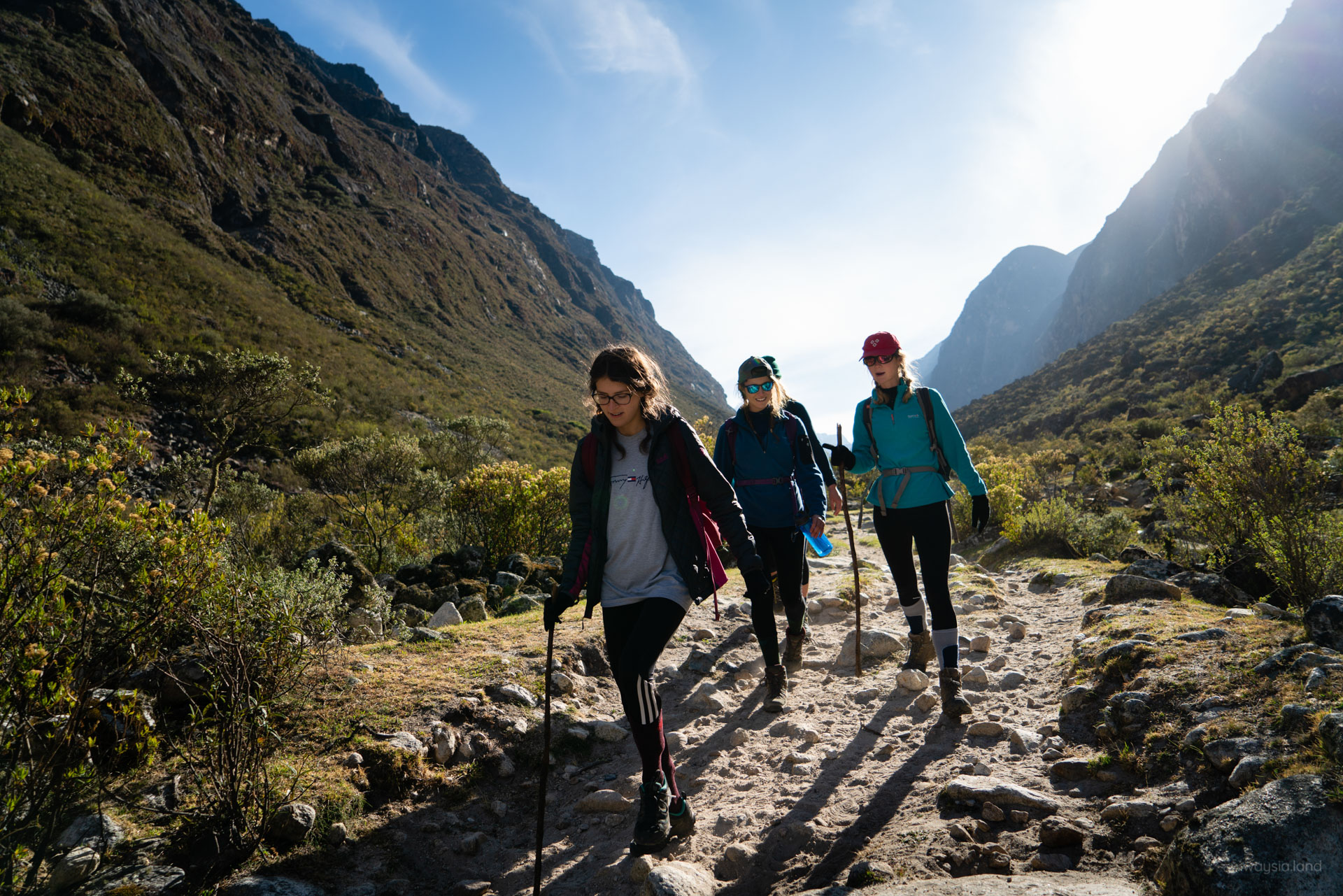
Final day – Santa Cruz trek – day 4
It’s always mixed feelings when it’s the last day of a trek. A combination of sadness that it’s ending and relief that you can have a shower and eat proper food.
Today would have us walk to the town of Cashapampa, on an all downhill but dusty and rocky path. If you have gaiters and weren’t wearing them before, you should wear them now. There were no optional hikes today and the day overall would be quite straight forward. I’d have to say though, the clouds cleared up and left us with some incredible scenes when looking back in the direction which we came from.
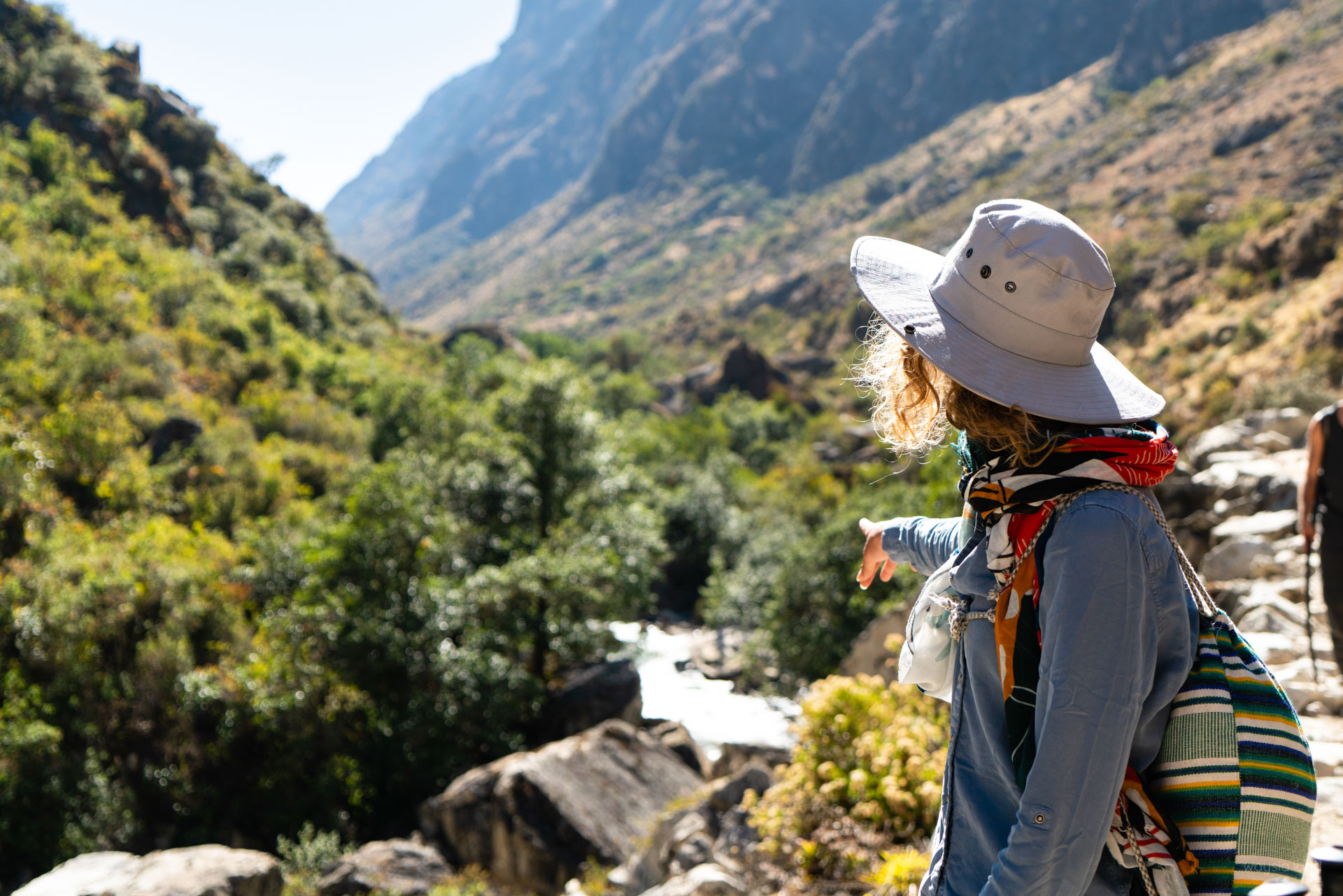
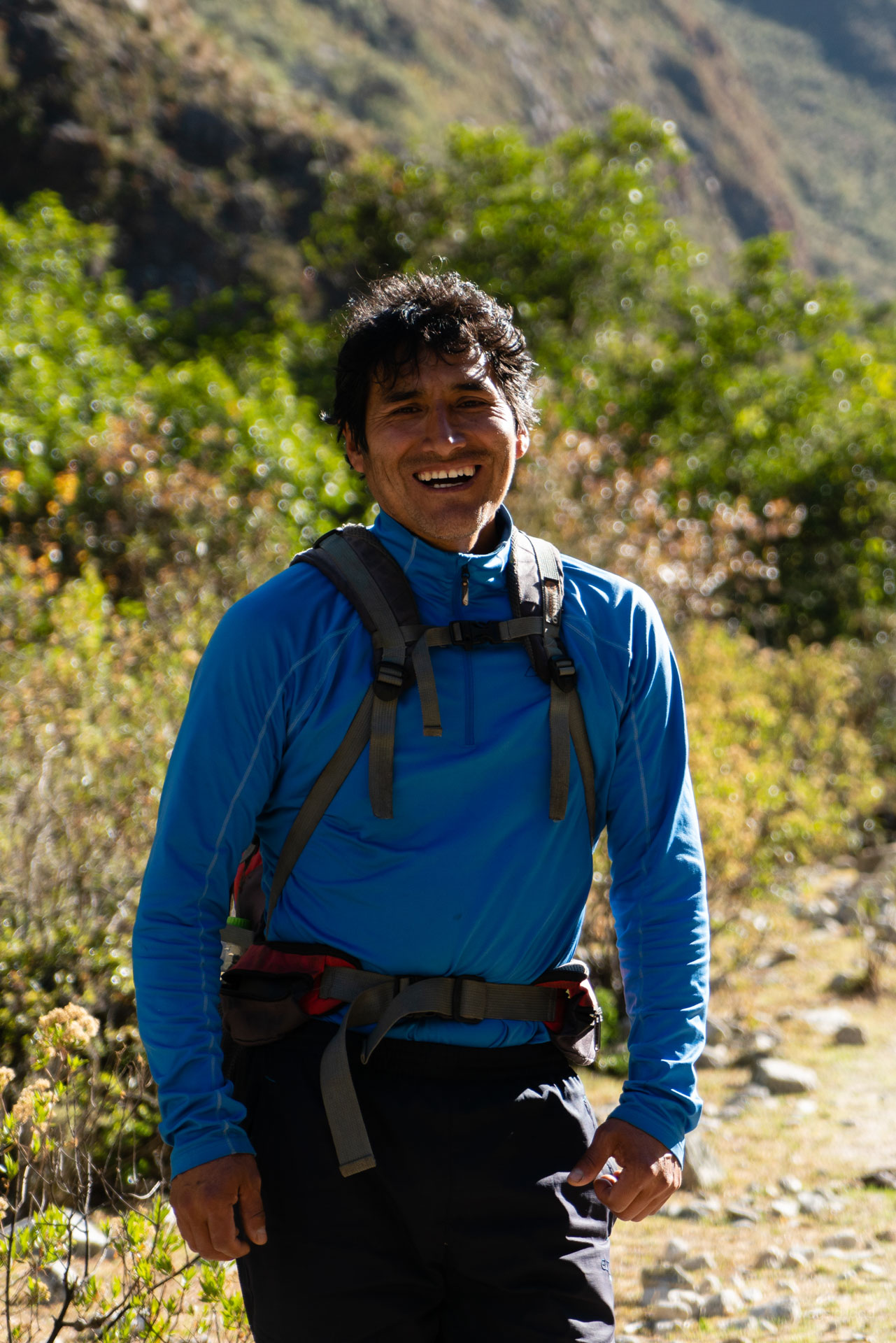
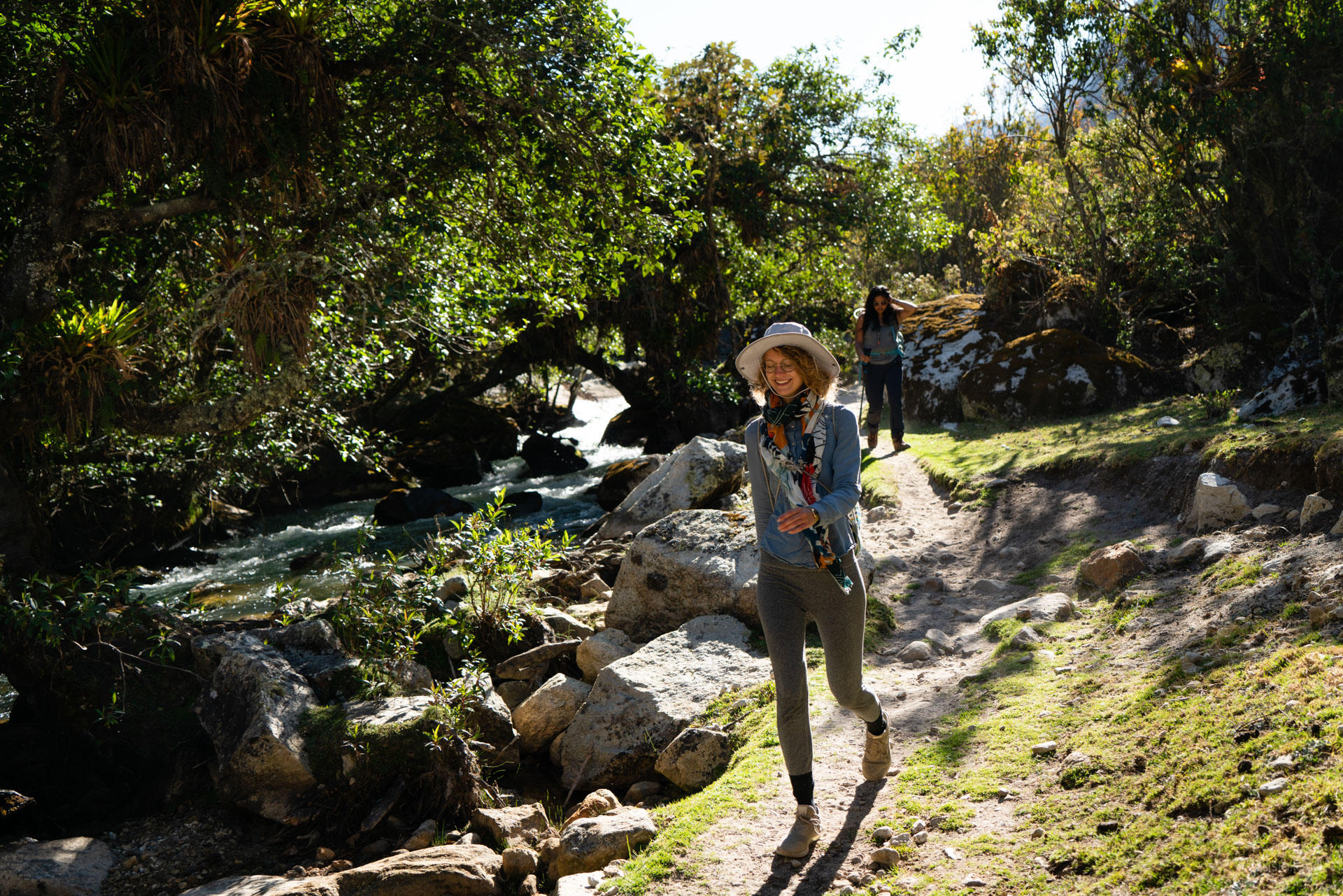
It’s about here the scenery changes with lush greenery growing by the river. A stark contrast to the wide-open valley plains that dominated the previous 2 days.
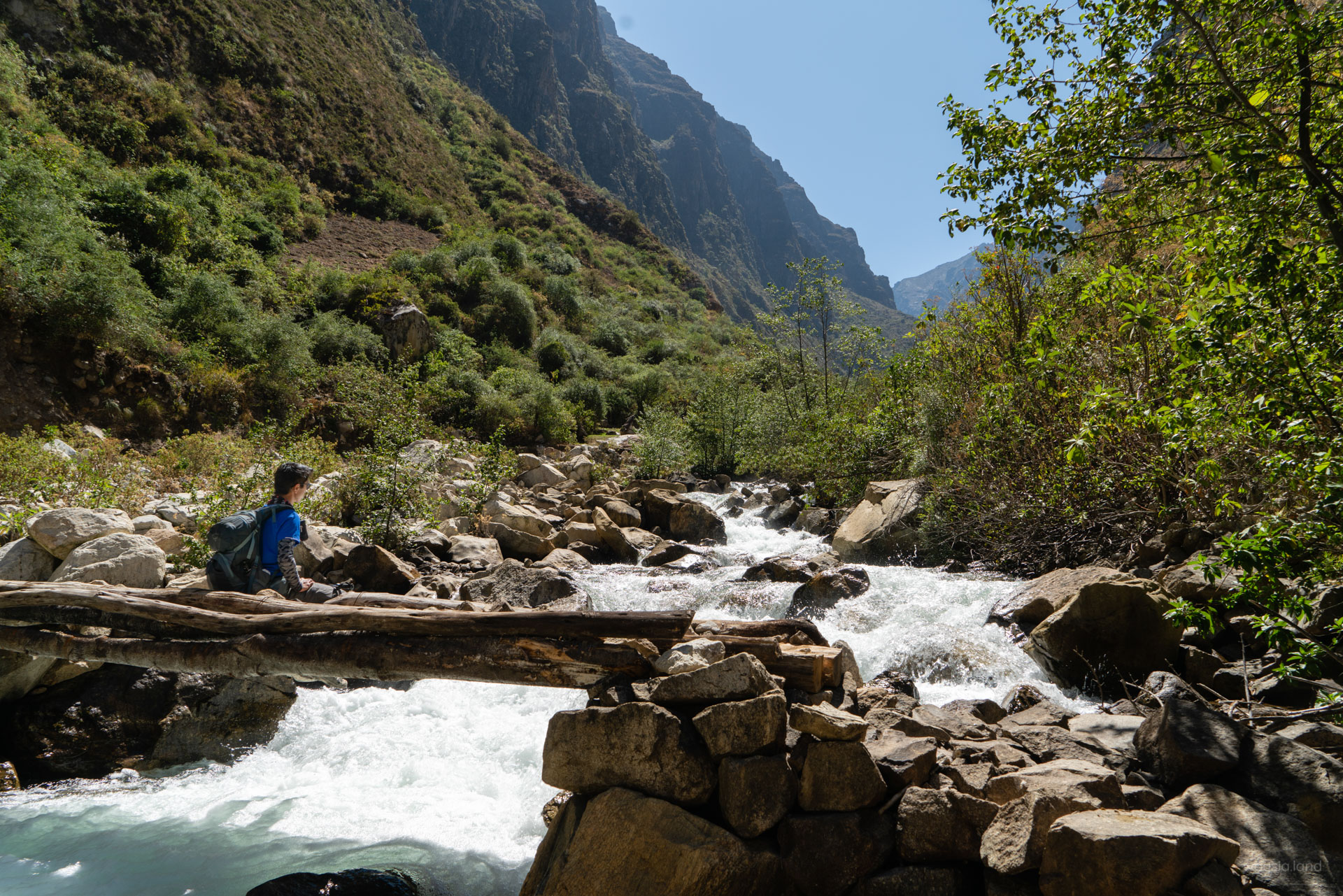
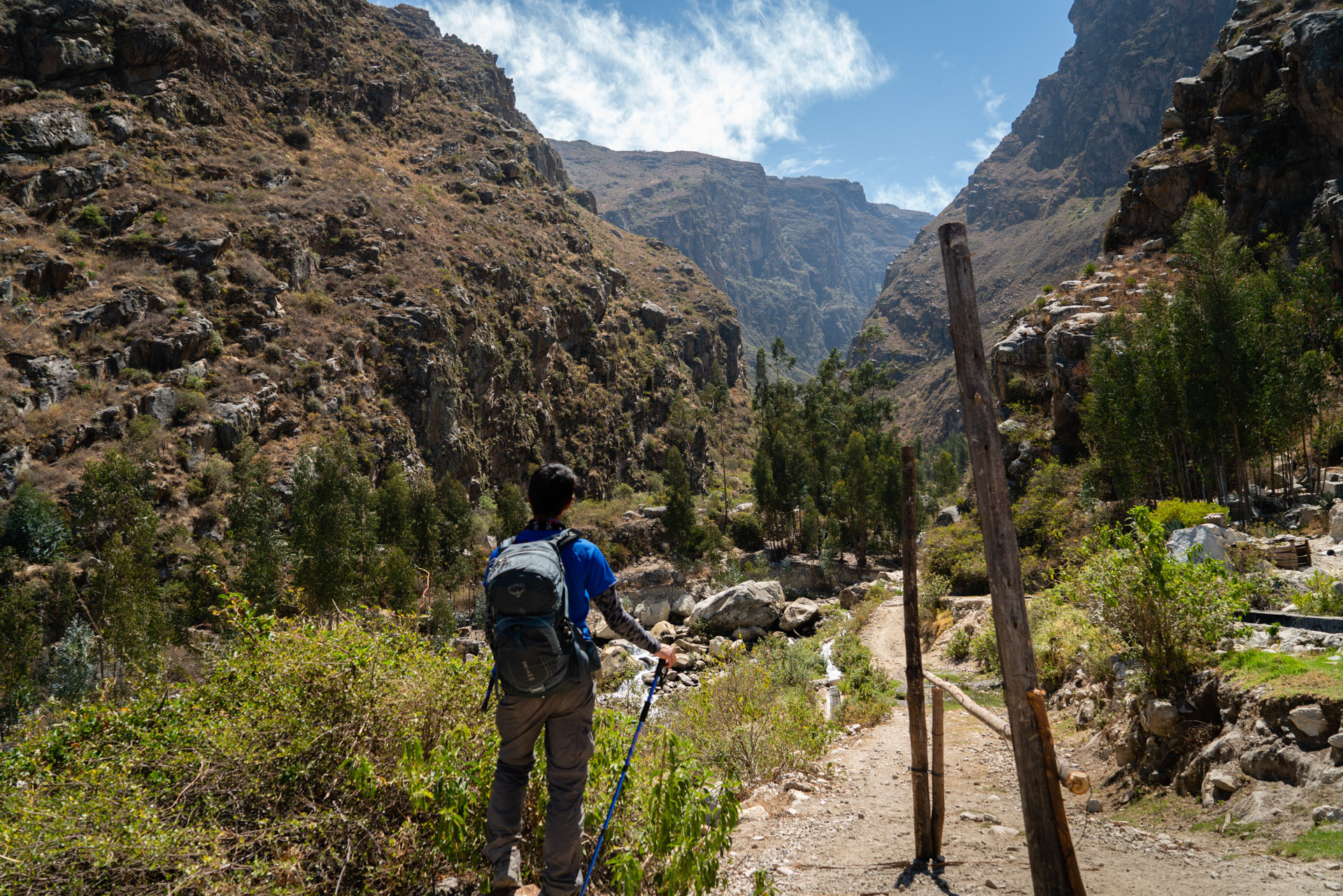
The end of the Santa Cruz trek
Sighs of relief, we finally crossed the finish line. Not far from the end of the trail we ended up at this place which was selling beer! 😍 Being the first and only thing you see upon finishing, this place must be making a small fortune.
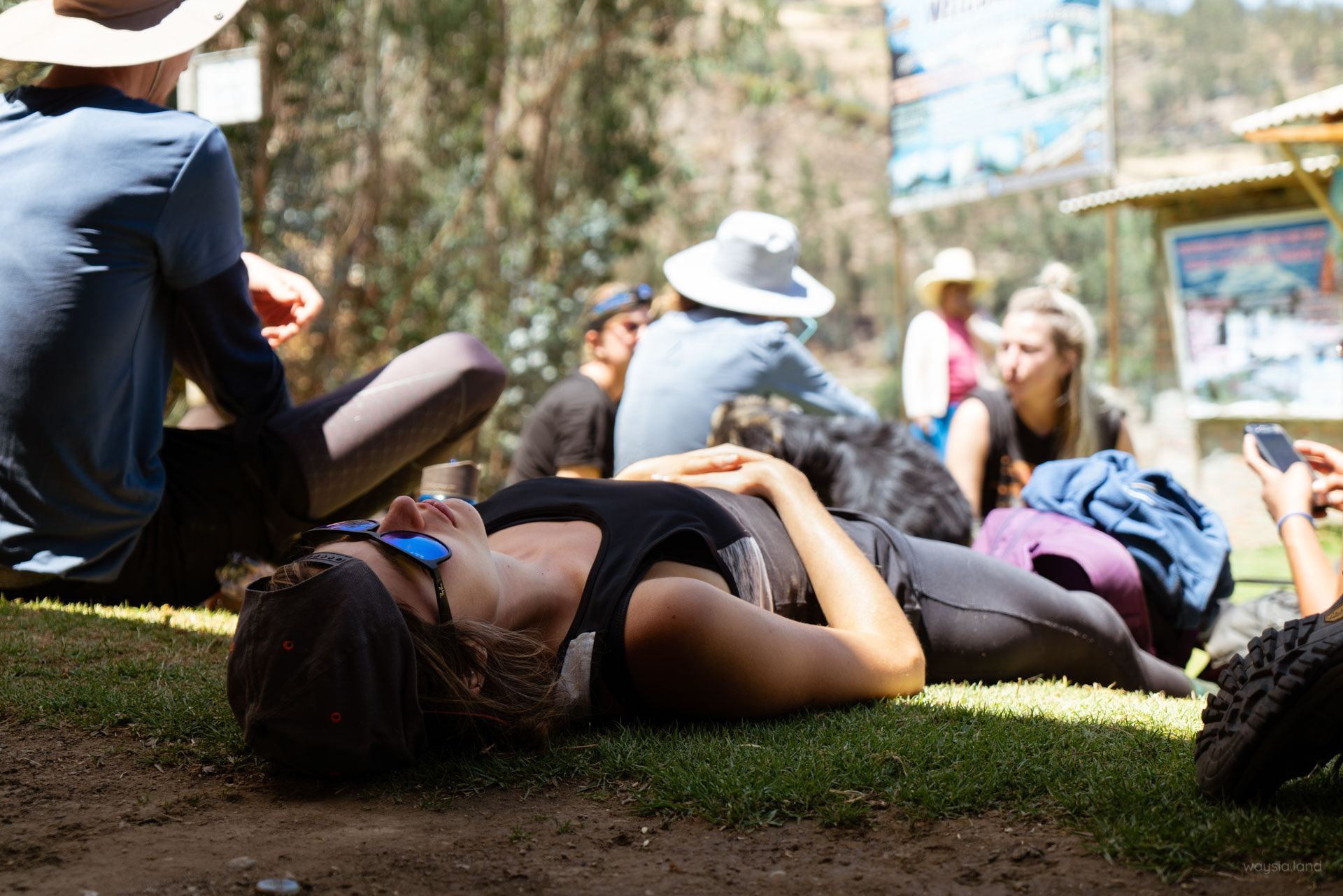
After ample time to relax, we boarded the minibus and headed to town on a road that looked as sketchy as any other mountain road in Peru. The official Death Road might be in Bolivia but Peru sure has some fine contenders. Surprisingly this minivan was fitted with a roll cage, although I feel it wouldn’t have done anything if we were to plummet to our doom. Come to think of it, does rolling off one of these cliffs happen so often that people buy roll cages in Peru?
And finally, the multitool I had been lugging around was also finally put to good use. It was hot and the window was jammed but we managed to open it by opening up the locking mechanism. 🔧
Later in town, we all met up again at a bar where they provided a free Pisco Sour cocktail. A neat cap off to the trek and one last time to see the gang together.
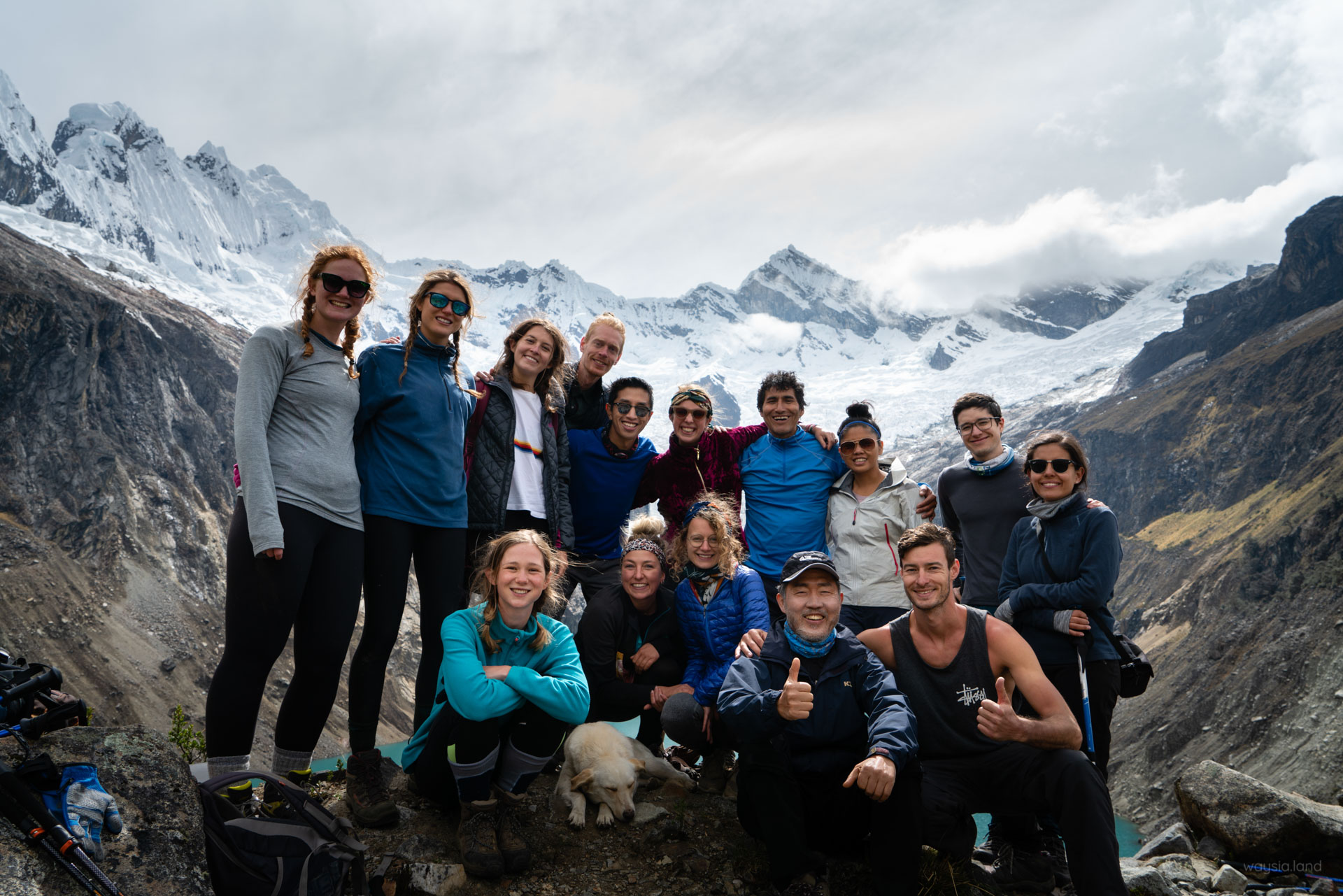
Final thoughts on Santa Cruz
While the group definitely could have been briefed better prior to departure and the food could have been more substantial, all in all, this was one amazing trek. If you’re heading to Peru and don’t mind roughing it out, you need to add this trek to your “must see” list. As of writing, this is still fairly undiscovered compared to Machu Picchu treks so I’d advise you to visit the area quickly before it gets spoilt. How long that takes is anyone’s guess but I’d guess logistics and a lack of toilets is the main barrier to hoards of people doing Santa Cruz. Once people start pouring in, the serenity will be all but lost.
RELATED POSTS
Photos from this trip were taken with the Sony A7R II and 24-70mm F4 Zeiss. Check the price on Amazon:
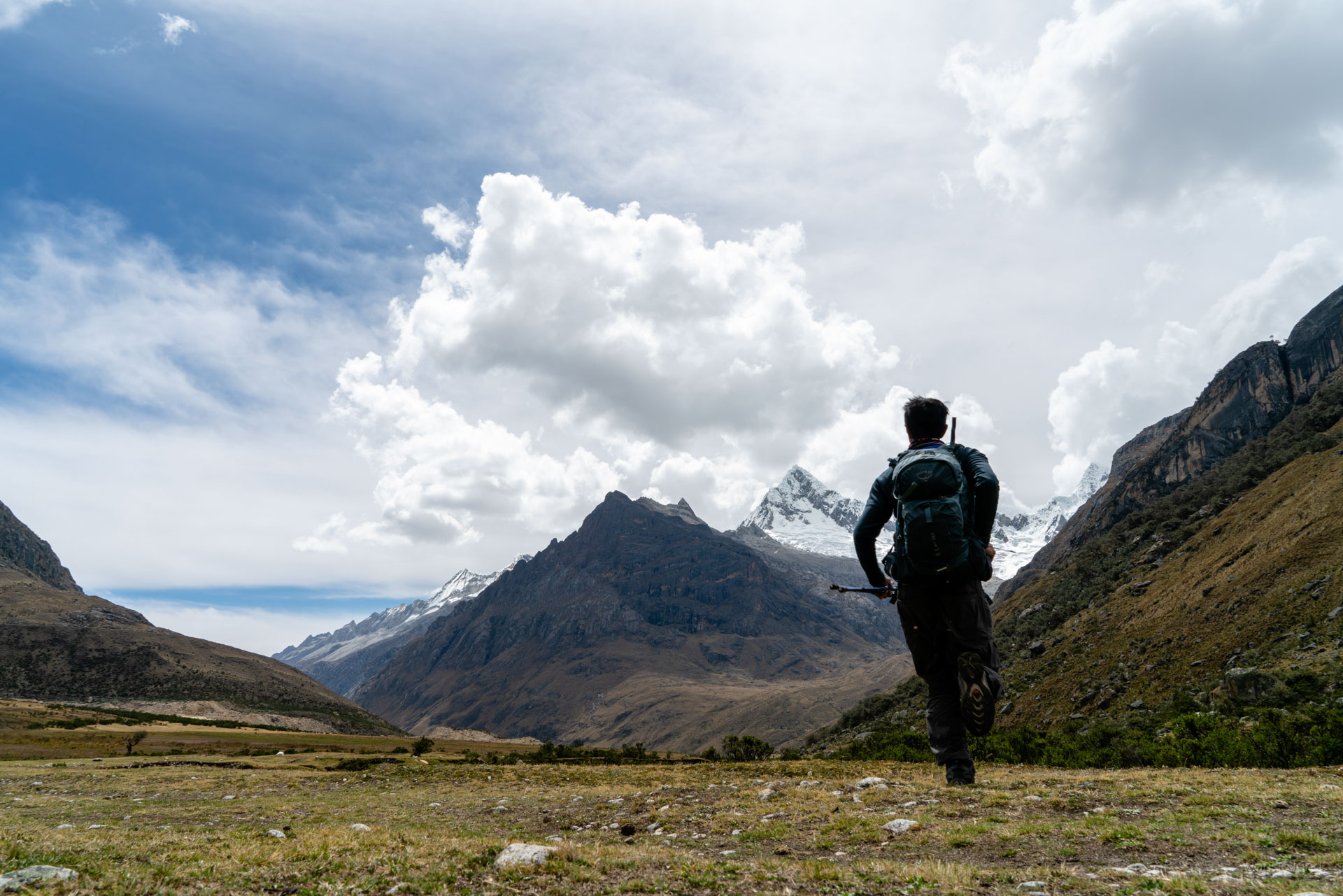
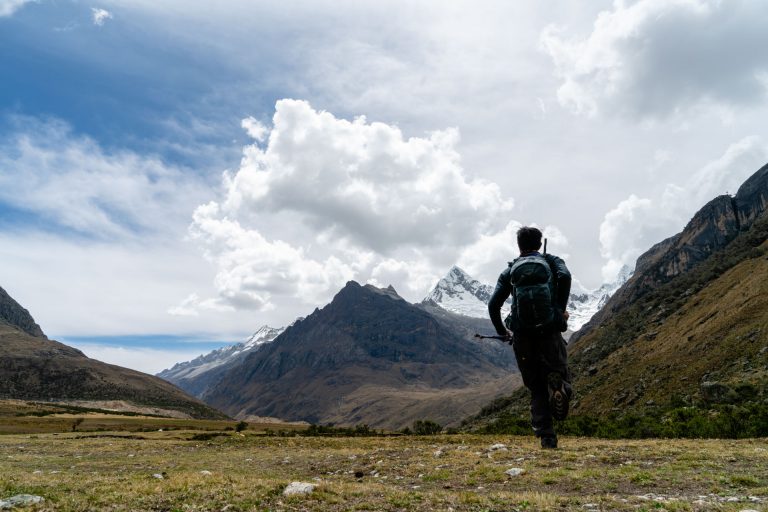
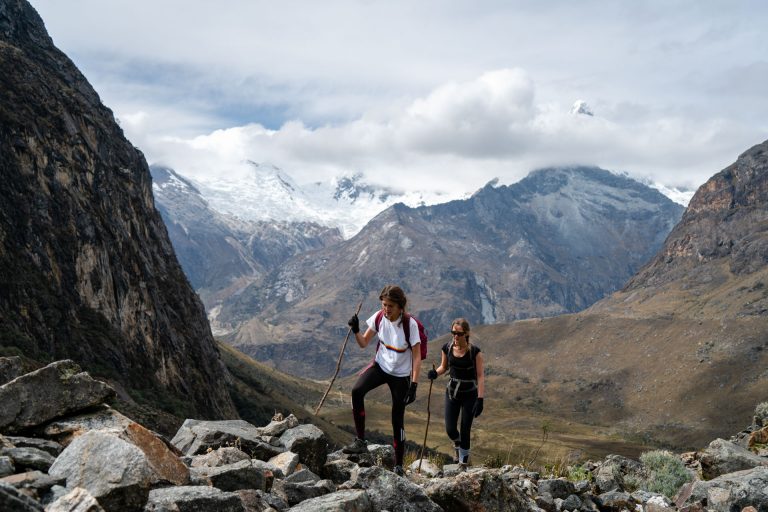
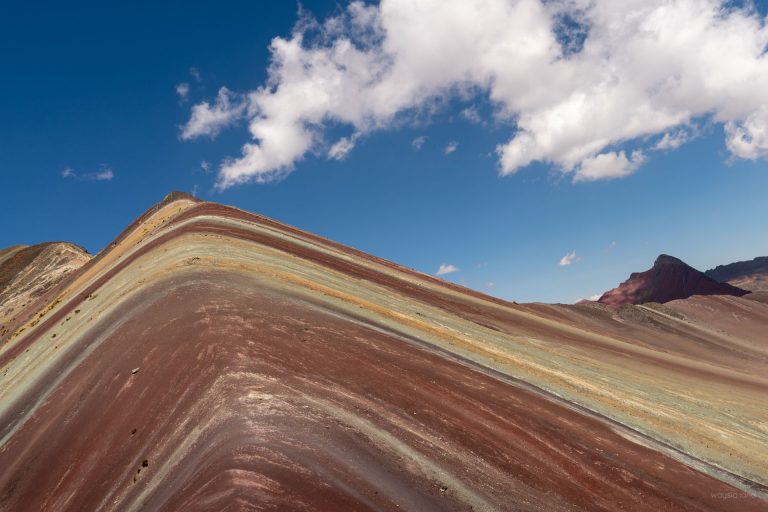
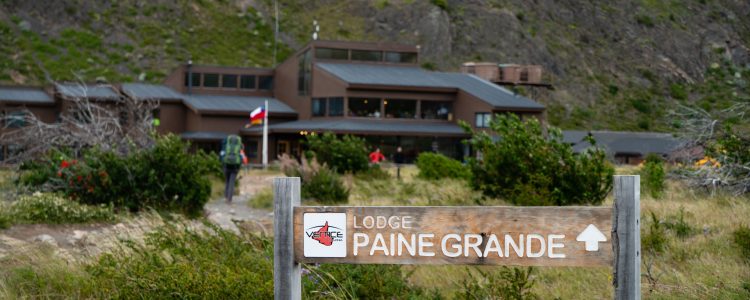
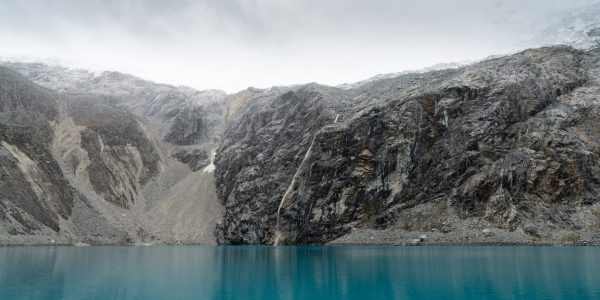
Salkantay Trek to Machu Picchu